Adventures with Aranui Cruises
By Peter Knego.
All photos by and copyright Peter Knego 2020 unless otherwise noted. Follow Peter on Twitter!
Aranui Cruises Day 1
Fortunately, this was not my first visit to Tahiti, so the pangs of spending just a couple of hours at Papeete’s palm-fringed Pearl Beach Resort prior to embarking Aranui Cruises’ MV ARANUI 5 weren’t too gut-wrenching.
Even for my sleep-deprived eyes, the sunrise over Moorea was as dramatic as memory served. And a balmy breakfast with fresh mango, pineapple and papaya in an aural backdrop of gurgling surf was quite a nice way to kick off the first official morning of this cruise adventure.
Combination Cargo Passenger Liner
My home for the next nine nights, Aranui Cruises’ ARANUI 5, is no ordinary cruise ship.
Built in late 2015, she is that rarest of vessels, a bona fide passenger cargo liner with four holds and accommodation for up to 295 passengers on regularly scheduled 12-night voyages to the Marquesas Islands. (Note, Peter did 9 nights of the full 12-night itinerary.)
Taking her name from “The Great Highway” in the Maori language, ARANUI 5 supplies the remote island chain with much-needed stores in return for local Marquesan wares like copra (the dried meat of a coconut), dried bananas and lumber.
These days, an actual combination cargo passenger liner (combi-liner) is the maritime equivalent of the dodo bird, but before the advent of the jumbo jet and containerization, the seas were filled with such exotic vessels.
Companies like American President Lines, Messageries Maritimes, Lloyd Triestino and so many more had fleets of fascinating, often fetchingly beautiful combi-liners that linked the most distant of lands.
They were less glamorous than true ocean liners but they were that much more mysterious and enchanting with their myriad cranes, rust-streaked flanks and exotic cargoes of both the human and inanimate kind.
With the ARANUI 5, all that combi-liner mystique is mashed up with a dose of charming incongruity. The ship was built in China, incorporating architectural elements of Feng Shui, albeit with Polynesian, floral-and-tiki-enhanced decor.
Further, an international passenger mix typically comprises French, North Americans, British, Australians and local South Pacific Islanders, with English being the first language on board. (Typical sailings see about 25% North Americans, 25% Australians/New Zealanders, and 50% Europeans, mainly French and German.)
Despite her name, this is actually the fourth ARANUI, having just replaced the smaller, 2003-built ARANUI 3.
Because of a Chinese superstition that associates the number four with death, the fourth ARANUI is named ARANUI 5 — sort of how some Western ships just don’t do a Deck 13.
The Cabins
In the weeks leading up to the voyage, I resisted over-studying the cruise documents and forming too many preconceived notions about what lay ahead. And, so it came as a very pleasant surprise when I encountered my stateroom, Deluxe Suite 7319, on starboard Deck 7.
In addition to its 45-square-foot balcony, the 245-square-foot space had a wonderfully firm but nicely cushioned king bed (made in Italy, I’m told). There was a wooden screen with inverted tikis separating the bedroom from the sitting area, a large console with plenty of big drawers, a mirror, computer desk, fridge (stocked once with complimentary water and soft drinks) and ample closet space.
The sitting area, which I unfortunately did not even get a chance to use, had a pair of chairs, a cocktail table and a sofa long enough to sleep on.
My WC was all it needed to be — large enough for a shower, sink and toilet. The tap water was not potable but each deck has a handy filtered water and ice machine.
Aranui supplies Tiki Tiare brand toiletries in each cabin and for those in suites. Further, an extra package of sundries, including a bar of starfruit-shaped soap, is provided.
Aranui Cruises Day 1 — The Ship Deck by Deck
With many guests still embarking, I decided to give the ship a quick once-over. There are nine passenger decks connected by fore and aft staircases and lifts.
At the top of the ship on Bridge Deck (10), there is an observation terrace in front of the wheelhouse, which is open for visits, conditions permitting.
Sky Deck (9) begins with the Sky Bar observation lounge that overlooks the bow. A block of cabins and suites follow, leading to a sheltered terrace at the stern.
Sun Deck (8) is devoted to more cabins and suites that likewise lead to a sheltered stern terrace.
Pool Deck (7) is laid out much like Sun Deck, but with the added pool and lido space at the stern.
The configuration of ARANUI 5’s afterdecks is structured like an amphitheater.
This is not unlike that of the veteran cruise ship MARCO POLO — perfect for viewing deck parties, dance rituals and magnificent sunsets. There is also an al fresco bar here.
Veranda Deck (6) begins with yet more cabins and suites that lead to the Veranda Bar, which has an open terrace, directly aft. Because of its vivid carpeting, we nicknamed this space the Hibiscus Room.
On either side of the Veranda Bar are two small enclosed galleries. To port, there is a card room and to starboard, a library with French, German and English books that largely reference Polynesia.
Another nice terrace awaits on aft Deck 6, this one with cushioned rattan chairs plucked from a Somerset Maugham novel.
Boat Deck (5) begins with more cabins and the scholarly Conference Room, which would be used on our voyage for port talks for English-speaking guests.
The Lounge, an attractive but quirkily laid out space with twelve support pillars in its center, is at the aft end of Deck 5.
It can only be accessed from the starboard side and there is an items-for-purchase snack bar on its port side. On the aft/port side, there is a 24-hour coffee station and on the aft/starboard side, a 24-hour tea station.
Upper Deck (4) has port and starboard promenades that lead to a sheltered terrace at the stern. It also has dormitory-style accommodations and the Restaurant.
In addition to a few staterooms, Main Deck (3) is home to the Reception and the Boutique, which is very well stocked with souvenirs, Aranui gear (t-shirts, hats, etc.) and snacks for those long gaps between meals.
Lower Deck (2) has a few more staterooms and even a deck passenger lounge that is not shown on the plan.
ARANUI 5 not only carries cruise passengers but also locals seeking transport between the islands.
The gym, which is comprised of a separate weight area and a cardio space, is on Lower Deck. There is also a spa with two treatment rooms and a menu of services for a modest fee.
I wrapped up my self-guided whirlwind tour just in time to catch the tail end of a colorful welcome dance on the pool deck.
Following boat drill, there was no better vantage for our departure than the various platforms on Bridge Deck. No assistance was required as ARANUI 5 slid past Papeete’s waterfront and into a calm, deep blue Pacific.
A layer of clouds kept the sun at bay as I unpacked and attended a briefing on the morrow’s scheduled visit to Fakarava in the Tuamotus, the island chain of reef-fringed atolls that is midway between Polynesia’s Society Islands and the Marquesas.
The clouds fizzled away in time for a magnificent sunset.
We were assigned first seating dinner at 7:30 PM. The Restaurant is large enough to handle the ship’s entire complement at one time but the meal times are staggered by a half hour to provide a little relief for the Polynesian staff, who couldn’t have been more sweet and engaging throughout our time on board.
The cuisine was fresh and delightfully well-prepared with a heavy emphasis on Polynesian specialties like poisson cru (marinated raw fish).
Dining consists of three daily meals that include a buffet-style breakfast and two seatings each for full-service lunch and dinner featuring set menus with an appetizer, main course and dessert.
Red and white wine are included with lunch and dinner.
Vegetarian, gluten-free and other non-kosher dietary choices are happily honored with a little advance notice.
Aranui Cruises Day 2
After breakfast, I headed up to Deck 10 as ARANUI 5 neared Fakarava, the second largest atoll in the Tuamotu archipelago.
Too large to berth at its small landing, our big white ship dropped anchor and began to offload her barges.
As soon as we stepped ashore, we were greeted by the locals with a fragrant tiare. With no scheduled tour and Fakarava’s relatively flat, long (60 kilometers) surface, I chose to run along its long, paved road for a few miles before donning mask, snorkel and fins (provided at Reception, free of charge, to all guests) for a swim through one of its many reefs.
The run went well but then a front blew in, bringing high winds and torrential rain.
I ditched the swim but got caught in the deluge and took shelter under a sprawling banyan tree, hunched over my cameras.
Once back aboard, a warm, dry lunch was especially appealing. As were the accompanying, fresh-baked breads and a glass of red wine.
With all her guests accounted for, ARANUI 5 hoisted her barges and anchors and continued her northeasterly course.
We would have the remainder of the afternoon and a full day at sea to enjoy our ship, rest up and prepare for an in-depth exploration of the Marquesas.
Aranui Cruises Day 3
Following breakfast, I was able to check out a few of the ARANUI 5’s eight types of cabins. At the bottom of the tier, there are 285-square-foot eight-berth dormitories with two bathrooms and a shower. There are also 135-square-foot four berth dorms.
Standard staterooms feature a porthole and measure 120-square-feet. They can be configured with two twins or a queen bed.
Deluxe and Superior Deluxe Staterooms have a private balcony and respectively measure 140- or 160-square-feet. In addition to their verandas, Deluxe and Superior Deluxe staterooms have a safe and refrigerator. And, 160- to 200-square-foot Junior Suites have two picture windows.
Premium Suites measure 200-square-feet and have a bedroom with a king or two twin beds and a sitting area with a sofa bed. They also come with a fridge and safe.
My favorite staterooms are the 240-square-foot Royal Suites that occupy the forward corners of Decks 5 – 8. They feature a bedroom with two twins or a king-sized bed.
Royal Suites also have a separate living room with a sofa bed, picture windows overlooking the bow and a walk-in closet. Royal Suite verandahs have a windbreak forward with a window overlooking the bow and an open balcony aft. Their WCs are also a bit larger than those in lower categories.
The largest and most lavish of ARANUI 5’s staterooms is the 440-square-foot Presidential Suite on aft/starboard Sky Deck (9). Divided into three sections, it features a separate bedroom with access to the balcony, which measures 130-square-feet.
Entered via the bedroom, the Presidential Suite has a large full bath as well as a smaller powder room that is adjacent to the living room. The Presidential Suite also has its own in-house coffee maker, among other “perks.”
Its center portion has a dining nook and built-in bar as well as a sofa bed. Ideal for families, it also boasts a living room with a sitting area and enough extra space for a roll-away bed.
It was a scorching day with just the right amount of clouds to provide a dramatic contrast with the piercingly blue, equatorial sky. I enjoyed the breeze and the hypnotic vantages of the sea from Bridge Deck.
It was also fun to linger for a while in the wheelhouse and sip a cup of coffee with the ship’s welcoming French first mate, Guillaume Acher. ARANUI 5 has an open bridge policy that is an especially nice plus on her long sea days.
That evening, as the embers of another beautiful sunset began to fizzle out over the ship’s wake, the ARANUI’s crew paraded out to welcome us.
From there, it was off to dinner, then to set the clock ahead by 30 minutes to Marquesan time.
A very long and adventurous day at Nuku Hiva loomed.
Aranui Cruises Day 4
Shortly before dawn, the ARANUI 5 had arrived at remote Taipivai on Nuku Hiva, the largest island and administrative capital of the Marquesas, which were discovered by South American tribes some 2,000 years ago before they continued onward to the lower parts of Polynesia.
The Marquesas were first encountered by Europeans on July 21, 1595, when Spanish explorer Alvaro de Medana de Neira stopped at nearby Fatu Hiva. At its peak, Nuku Hiva boasted a population of up to 100,000 prior to its colonization, which basically decimated the local people with disease and rampant alcoholism. Today, the island has 2,600 residents.
Fortunately, our tour host Ita Ata (aka Steven) prepped us for our first excursion and the equatorial heat. It was already hovering near 30 Celsius (well over 90 Fahrenheit) when I stepped out on deck at 6:30 AM.
We clambered into the barges and got ready for our first “beach landing” in the same spot where Herman Melville made his initial Marquesan contact.
Steven had also warned us about the “no no’s” (tiny, bloodthirsty flies) on the beach, so we made quick work of debarking that barge, Iwo Jima style.
Moments later, we were off in 4x4s driven by the locals. Our course would take us through a long valley and then up a series of switchbacks over a verdant ridge to the first stop, the archaeological site of Kamuihei.
Kaumuihei boasts a huge banyan tree that was considered sacred in ancient Polynesian culture. The heads of captured enemy soldiers were once propped in its numerous nooks and crannies. Human sacrificial victims and those waiting to be eaten (mainly women and children) spent their last hours tied up in this and nearby tree tops.
We had time to explore the tohua or ancient gathering spot, where numerous petroglyphs were easier to distinguish with a little water poured on them. The mana or spiritual power of this place was almost as prevalent as the heat and humidity.
As we clambered along a short network of trails, I zapped myself with some extra Heiva (a Tahitian insect repellent made from local seed oils and floral extracts) and, for good measure, some DEET-enhanced Off.
Once bitten, forever shy.
Our visit concluded with a ritual dance ceremony underneath that banyan tree.
From Kamuihei, it was a short ride to the stunningly beautiful beach of Hatiheu, where Robert Louis Stevenson made his first landing in 1888.
We had some free time to wander or just lay back and gaze up at the sky. On the way back to Taipivai for lunch, we paused for a few photo stops but pictures just can’t do the place justice.
The Polynesians and especially, the Marquesans, are fond of umu-style cooking where they wrap the meat (in this case, a hog) in banana leaves and bury it for several hours atop heated stones.
In addition to the hog, there was fried fish, the ubiquitous poisson cru (marinated raw fish), roasted goat and all sorts of other local specialties like purple potatoes, delicious plantains and much more.
After lunch, we piled back into our various 4x4s and wound our way over yet another ridge to Taoiahe, the Nuku Hiva’s main town.
The final stop on our tour was the Notre Dame Cathedral, which was constructed in 1973, replacing a prior church built in 1848 atop sacred ancient grounds.
Today’s Notre Dame is known for its rosewood carvings and stones from each of the six inhabited Marquesas islands. After a photo-op, our friendly driver Eitan returned us to the ARANUI 5, which was discharging a load of cargo at the far end of Taoiahe.
Aranui Cruises Day 5
Our host Rani urged us to be up on deck for the ARANUI’s arrival in Ua Pou.
Those of us who heeded were so glad we did! You could practically hear the orchestral swells of Dimitry Tiomkin, Basil Poledouris or maybe even a young John Williams as we approached this otherworldly landscape pierced by a series of jagged spires.
Look closely and you might spot King Kong or one of James Bond’s nemeses hidden in the mist that slightly obscures the phalluses of Ua Pou.
We joined the 8:00 AM English-speaking hike to the white cross on the neighboring mountain.
It was well worth the view, despite the wilting heat.
From the white cross, we walked to the cultural center in the village of Hahahau where the locals had gathered to sell their wares and provide samples of the native fruits. Once sated, I took the beach route back to the ship.
After a work-out and a refreshing swim, I headed back out for some views of our unique combi-liner, which, by the way, is nicknamed the “Seventh Island” for servicing all six of the inhabited Marquesas islands.
It would also appear that her prominent bow bulb sometimes serves as a mini-island, as well.
Aranui Cruises Day 6
The first of two “double island” days began in the anchorage of Puamau on Hiva Oa, where Paul Gauguin and Jacques Brel spent their final years. We rode the barge ashore and waited as supplies were exchanged at the makeshift landing.
Aside from a tractor that did some heavy lifting, everything was done manually.
A short 4×4 ride to the I’ipona archaeological site gave us a chance to interact with another friendly resident.
At the best preserved ancient site in the Marquesas (thanks to a massive restoration by French archaeologists Pierre and Marie-Noëlle Garanger-Ottino in 1991), there are numerous stone tikis, including Tiki Takaii, the largest in the islands.
As with the site in Nuku Hiva two days prior, one could feel the mana or spiritual power.
In one spot that our guide indicated was an altar for sacrificing enemy soldiers, we felt “vibes” just from touching the stones.
It was a reasonable 1.5 kilometer walk back to the ship but because of the heat, we opted to ride back to the landing with another friendly Hiva Oan.
As we enjoyed a nice lunch, ARANUI 5 motored her way over to neighboring Tahuata, the smallest inhabited isle of the Marquesas, which is fringed with some spectacular but very remote beaches.
We would have a few hours to swim in the sparkling waters and as a bonus, I was happy to work in a nice little 20-lap run in the sand.
That night, while anchored off Hiva Oa, ARANUI 5 hosted her first deck barbecue under the stars.
Aranui Cruises Day 7
In the port of Atuona on Hiva Oa, a school bus transported us to Calvary Cemetery, which overlooks the town where Paul Gauguin spent his final years. Our guides shared that some of the blue-eyed, blondish locals are thought to be his descendants.
This is also where terminally ill French chanteur Jacques Brel arrived in late 1975 aboard his sailing yacht Askoy. Brel was so captivated by the place that he rented a home there but when his condition deteriorated, he returned to France and died in 1978. He is now buried here alongside Paul Gauguin.
Brel may not be as well known outside of France as, say, Piaf but his influence is still very tangible. His songs have been covered by a roster of artists, from Nina Simone and Marc Almond to David Bowie.
Next to his grave were stones with hand-painted messages and several of our French fellow passengers were holding a graveside vigil when I arrived.
Gauguin’s resting place is slightly more imposing and yet rather modest for an artist of his renown.
The nearby Gauguin Museum has prints of his works with descriptions in French, while the adjacent Brel Museum has posters and photos covering his career in a hangar-like space that contains his twin engine plane, JoJo, which he bought for easy transport to the Marquesas from Tahiti.
It also helped transfer locals and their supplies between the islands.
As we lunched on board, ARANUI 5 sailed off to nearby Tahuata and dropped anchor off the village of Hapatoni, which is best known for its bone carvings.
After a brief visit, I took an early pontoon back to the ship for a refreshing work out, swim and a nap before dinner.
Aranui Cruises Day 8
We rode the barge to shore from the Omoa anchorage off ruggedly lush Fatu Hiva, which seemed like a Marquesan mini-Kauai.
Throughout the voyage, we had been preparing for today’s Zen-like challenge: a 17-kilometer hike over the ridge to Hanavave on the other side of the island. I donned my red and black sneakers for what would be the last in their series of globe-trotting treks.
Their well-worn treads had imprinted the soils of more lands than I can count, from the sands of Alang to the canals of Amsterdam.
It was wise that we were cautioned repeatedly that the hike would be up a steep grade in sweltering heat and humidity with very little shade. For those with second thoughts, after the first half hour, there was no turning back, since ARANUI 5 would be sailing off to meet us in Hanavave on the opposite side of the island.
At the half-way point, some 400 meters above sea level, it was almost refreshingly cool. We were greeted with cheers by members of the ship’s galley team, who were waiting for us with a small deli set-up.
And, oh, did that hard-earned tuna baguette and a bottle of ice cold water taste good!
Although climbing up was more exerting, going down was actually much more of a challenge. However, the vistas were stunning, making it hard to not occasionally stumble in distraction.
Past a few bends, the ARANUI 5 appeared as a little speck in the Bay of Hanavave.
Near Hanavave, the remarkable stone formations looked as though they might have been lifted from Easter Island. Towards the end of the road, the incline gave San Francisco’s Lombard Street a run for its money.
At Hanavave, we limped aboard the first barge for the short ride to the air-conditioned comfort of our ship. I immediately tossed the haggard shoes and my scorched/drenched clothing and headed for the pool.
Once there, a fellow passenger waved me over to witness a magnificent manta circling the ARANUI’s stern.
Shortly before sunset, the ARANUI 5 sailed off to Ua Huka in the Northern Marquesas.
Aranui Cruises Day 9
Our adventure on the island of Ua Huka began with a 4WD ride to a botanical garden where we encountered numerous, ripe-for-the-picking, local fruit trees.
From there, it was off to the cultural center at Te Tumu to browse local handicrafts and visit a small museum.
The coastline was significantly more arid than what we witnessed on the other islands, almost recalling that of central California.
Our next stop was the village of Hane, where we had time to explore the local marketplace and a scattering of small museums.
There is a large rock at the outskirts of Hane Bay that bore a strong likeness to California’s Morro Rock.
We stopped for lunch at a local restaurant but well-worn from our 17-kilometer trek on the day prior, decided against the optional, sun-drenched 5K walk back to the ship. After a short 4WD ride through yet more colorful flora, we were back on board the ARANUI 5.
I began the somber task of packing as ARANUI 5 made a westerly course to Nuku Hiva, where a school of dolphins greeted us off the rugged shoreline.
Just before twilight, ARANUI 5 dropped anchor at Taioahe, where she would spend the night. Meanwhile, the only other cruise ship spotted since we left Tahiti nine nights prior, Oceania Cruises’ MV SIRENA, was maneuvering away.
The preparations for the poolside Polynesian evening were well under way as the SIRENA quietly glided past us on her way to Tahiti.
Aranui Cruises Day 10
We disembarked shortly before the ARANUI 5 finished loading her outbound cargo and sailed off to Ua Pou, where she would take on more local wares before beginning her return leg to Tahiti via Rangiroa in the Tuamotus and Bora Bora.
Meanwhile, we spent the rest of the morning winding through the mountains of Nuku Hiva, en route to the airport.
Near the summit, there was a fantastic view of Tapueahu Canyon, which is Nuku Hiva’s miniature version of Kauai’s Waimea Canyon.
Hours later, our plane soared over the coral-fringed seas of Tuamotu during the first of my homeward flights, retracing the beginning of this remarkable voyage through Polynesia.
Follow Peter Knego on Twitter here.
Special Thanks: Guillaume Acher, Rani Chaves, Marilyn Green, Cait Langley, Julie Parrotta.
For more info, go to Aranui Cruises.
© This article is protected by copyright, no part may be reproduced by any process without written permission from the author. All Rights Reserved. QuirkyCruise.com.

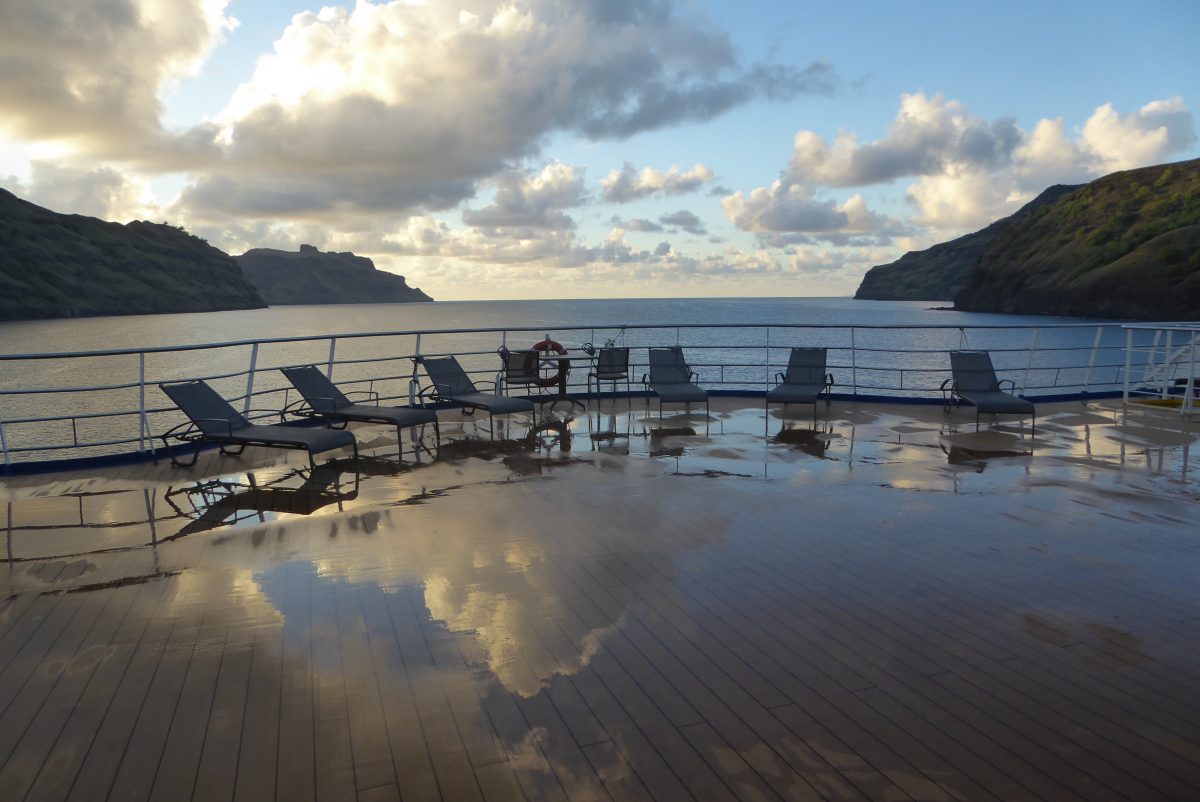
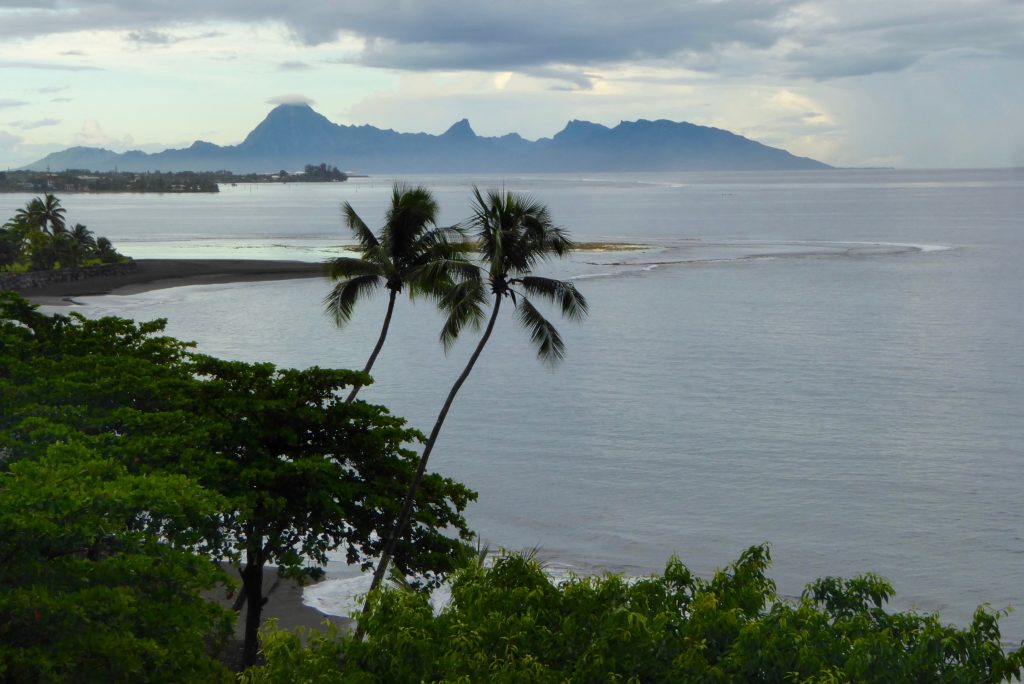
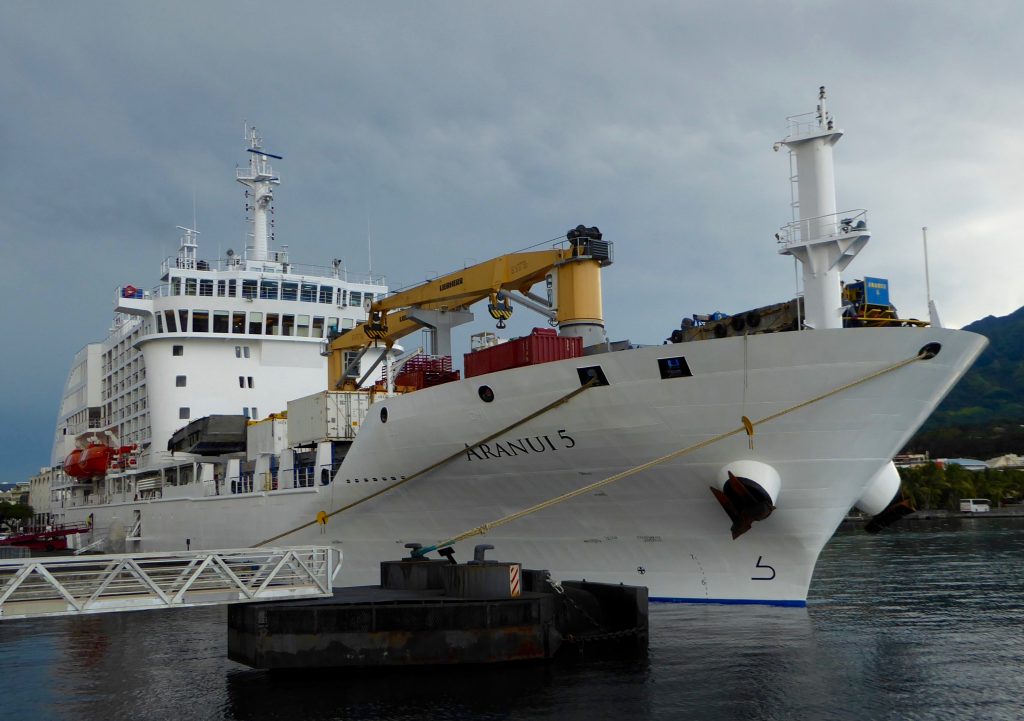
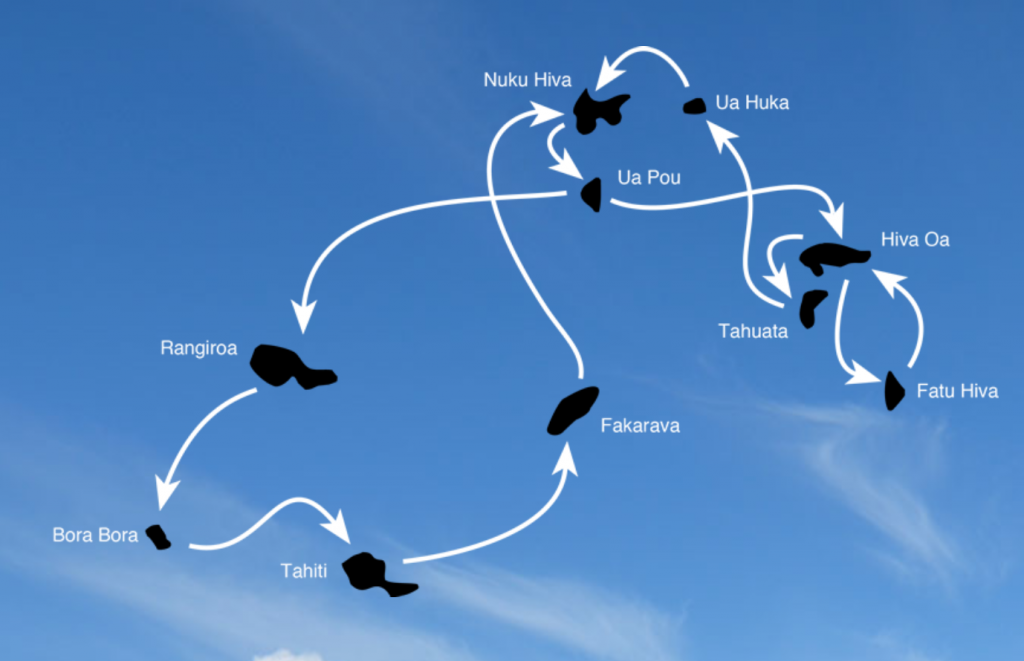
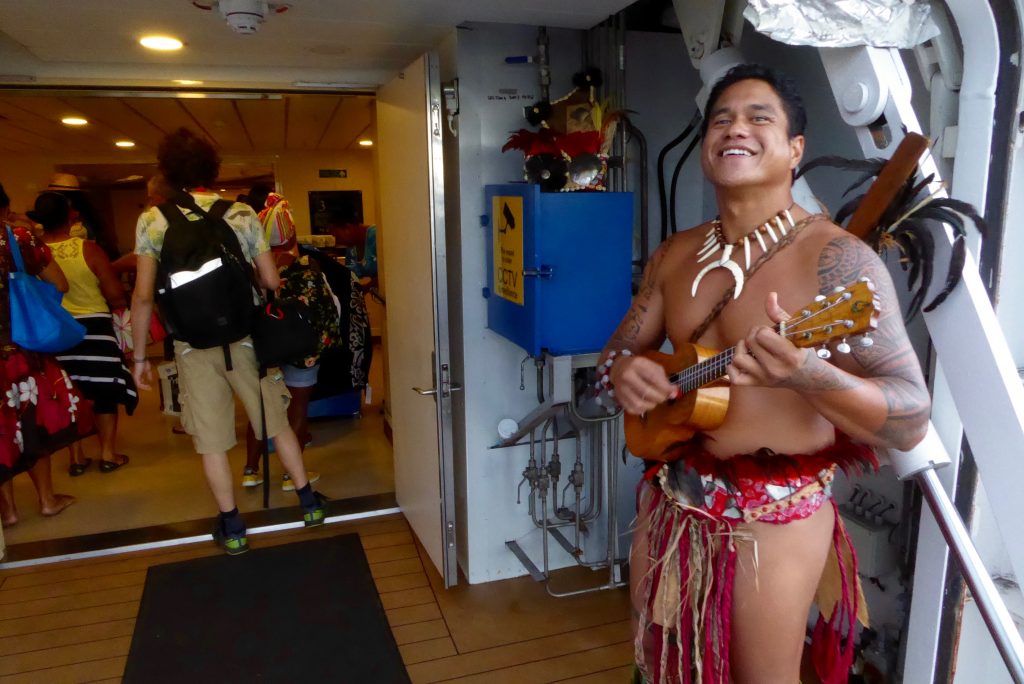
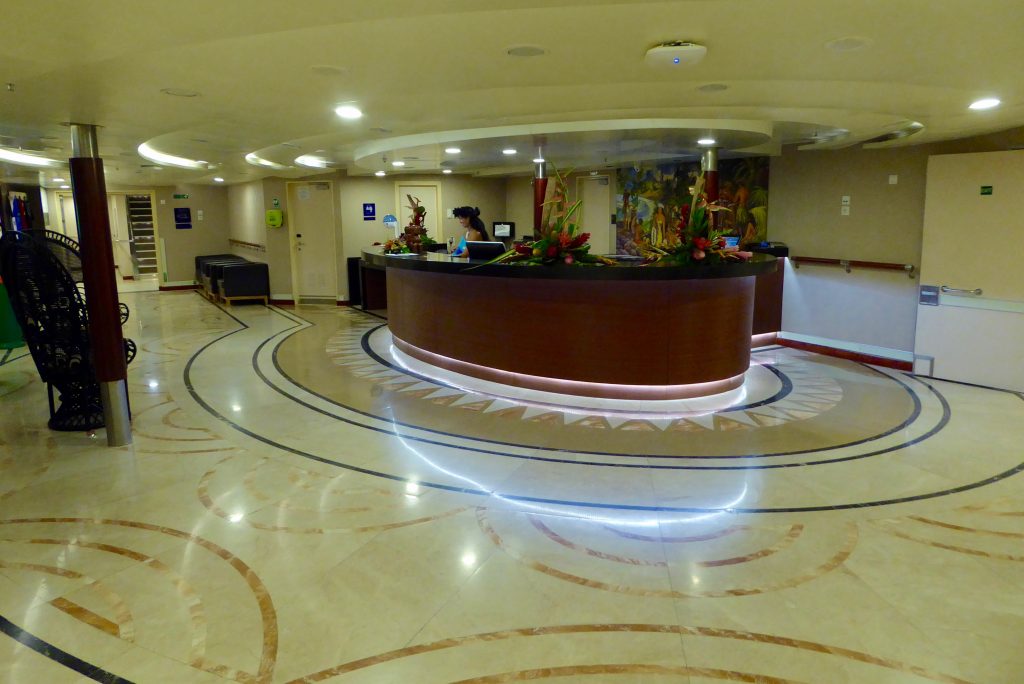
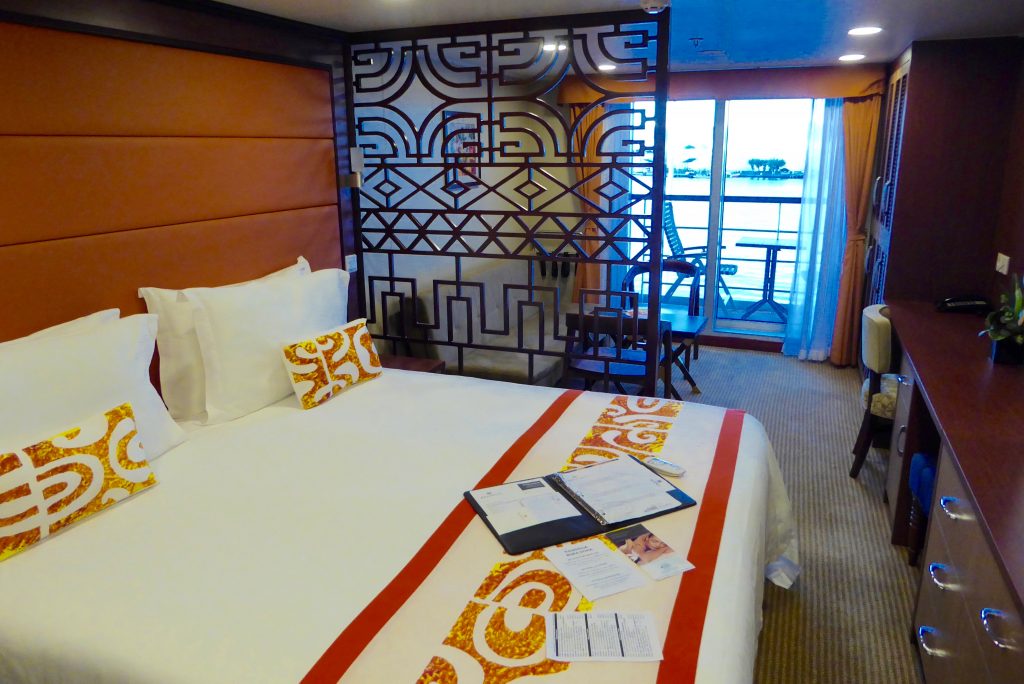
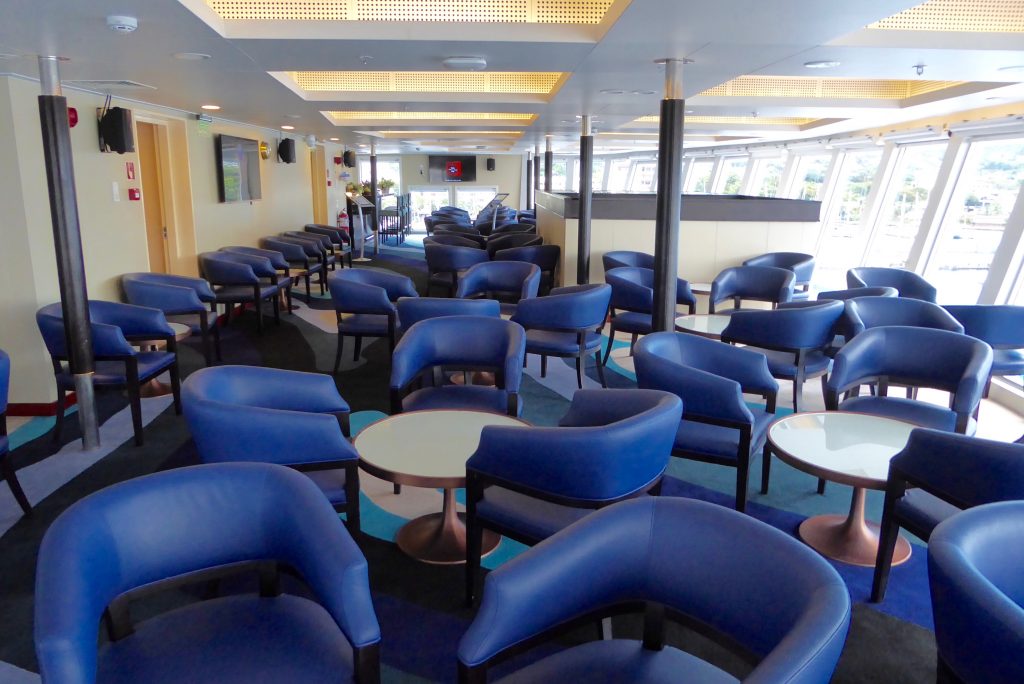
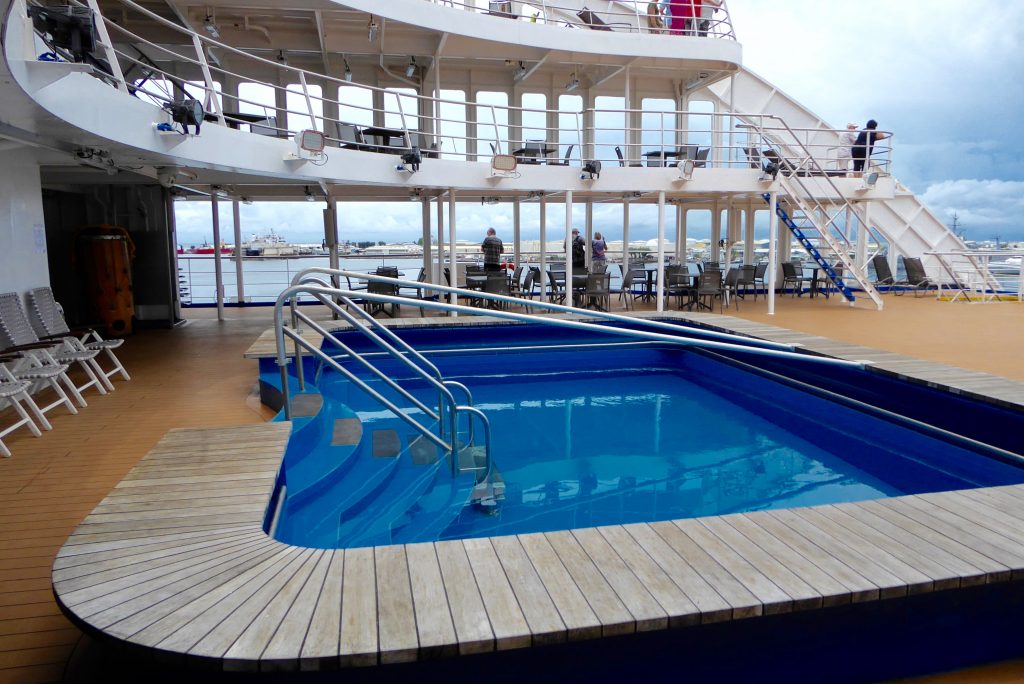

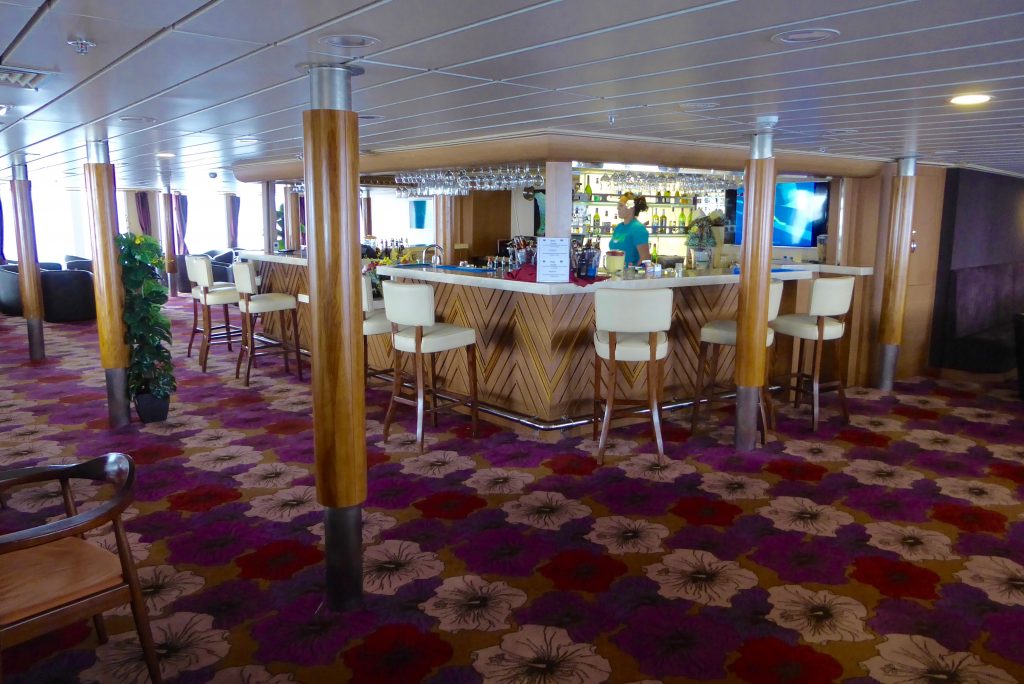
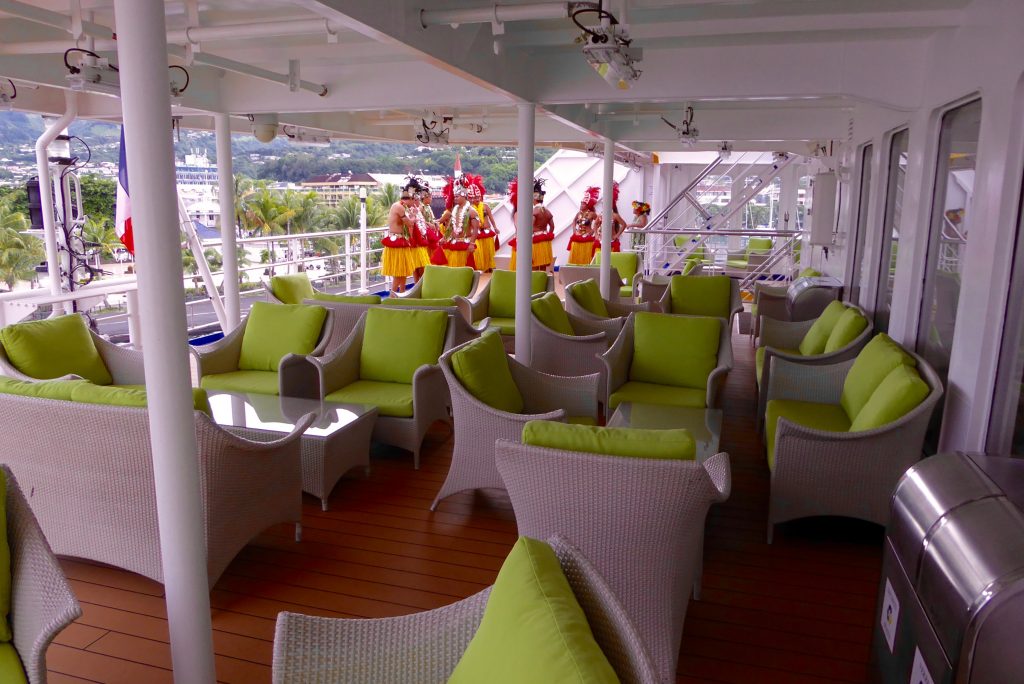
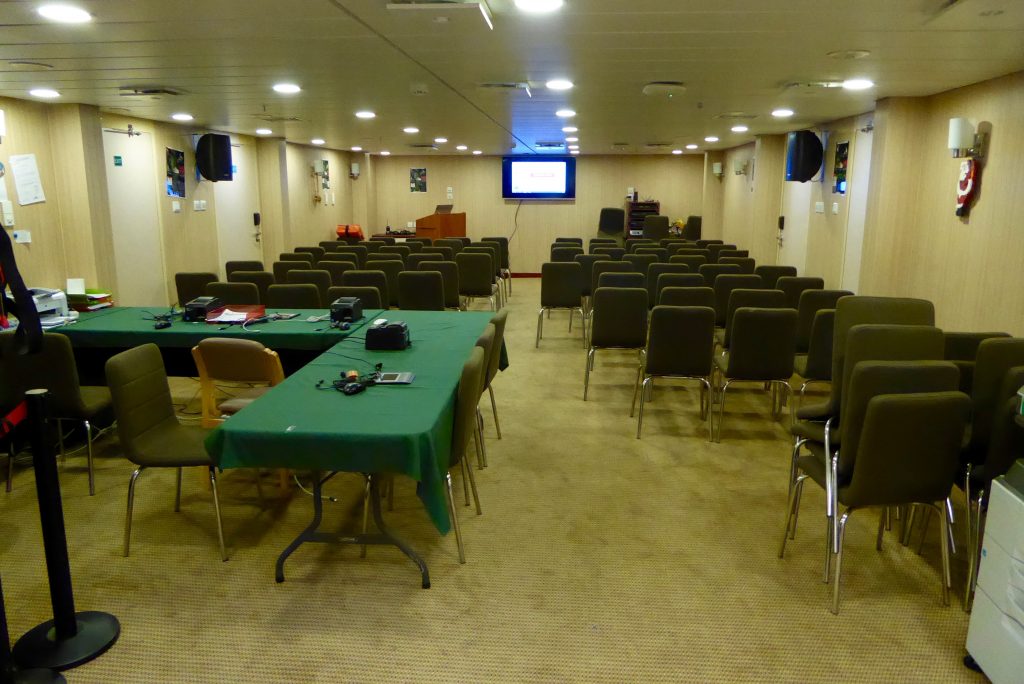
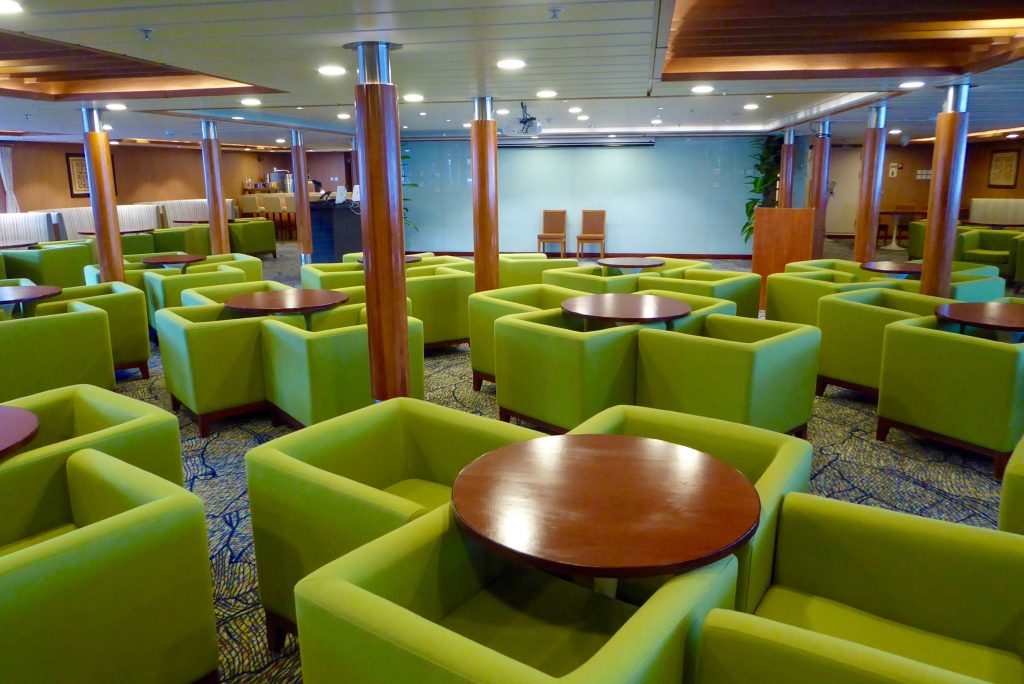
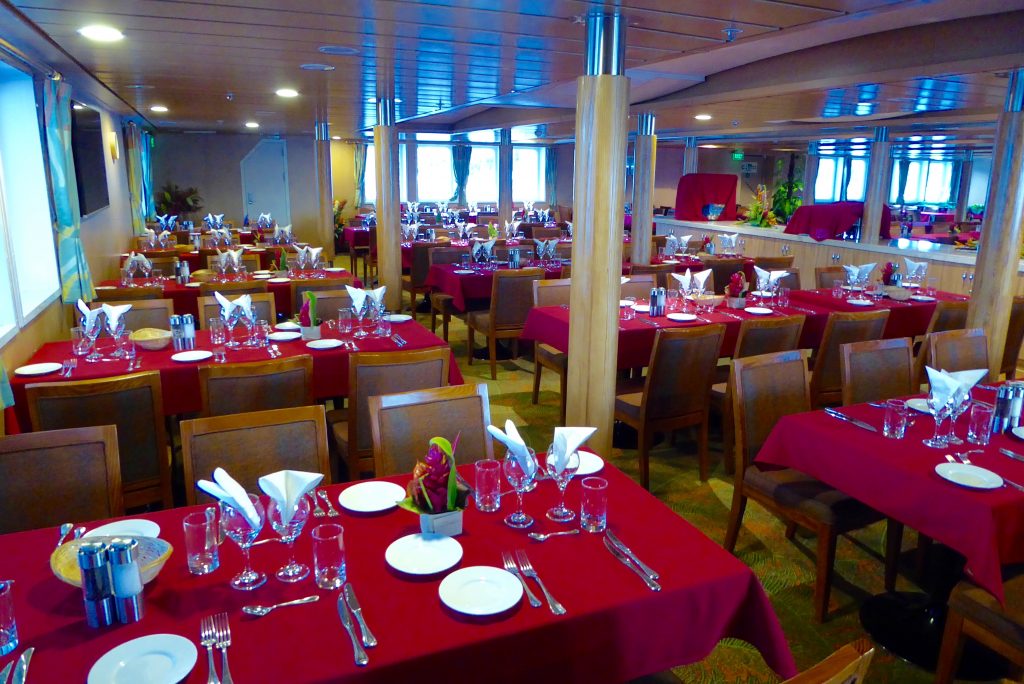
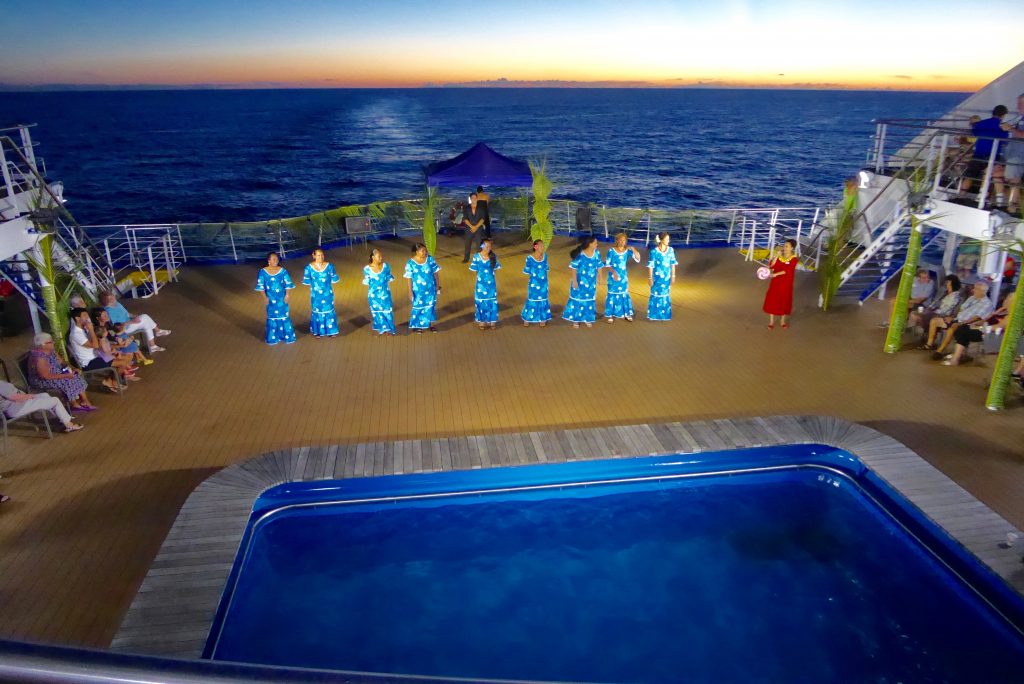
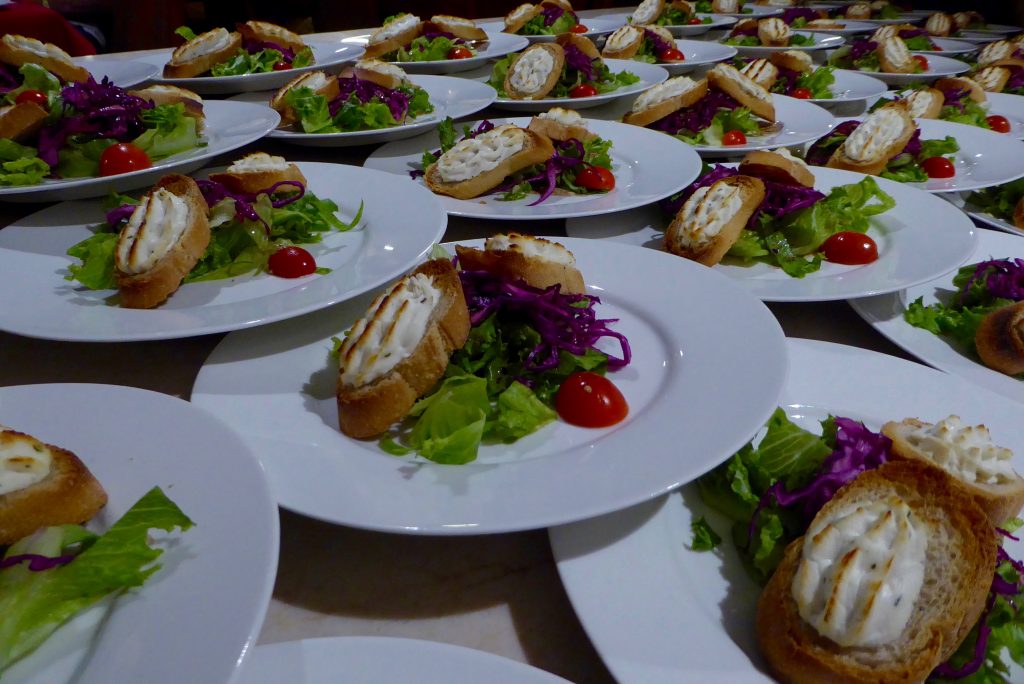
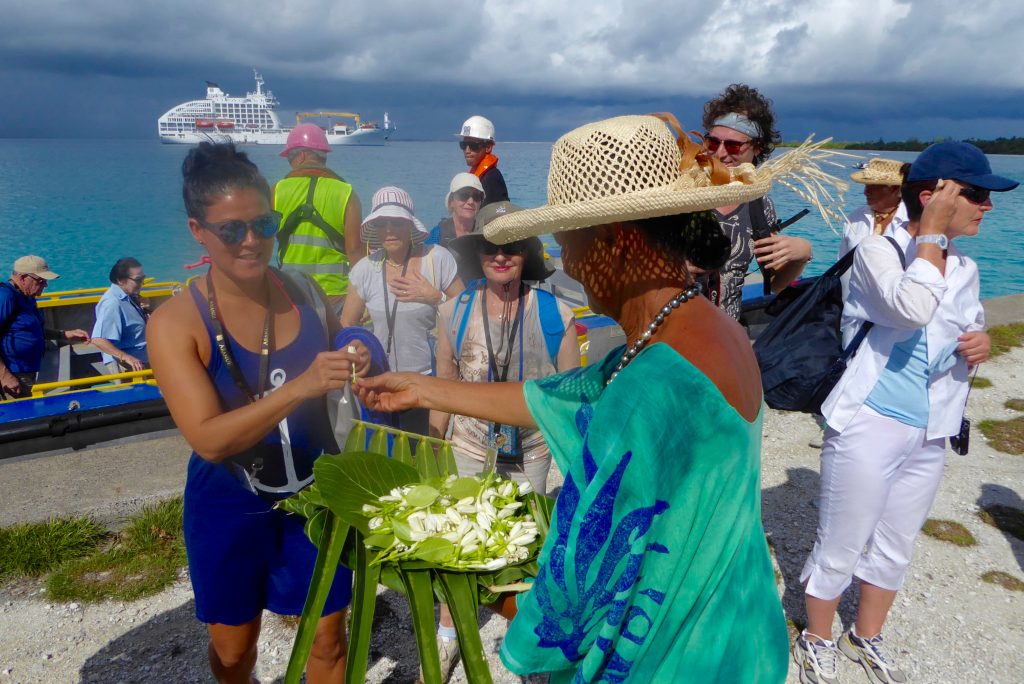
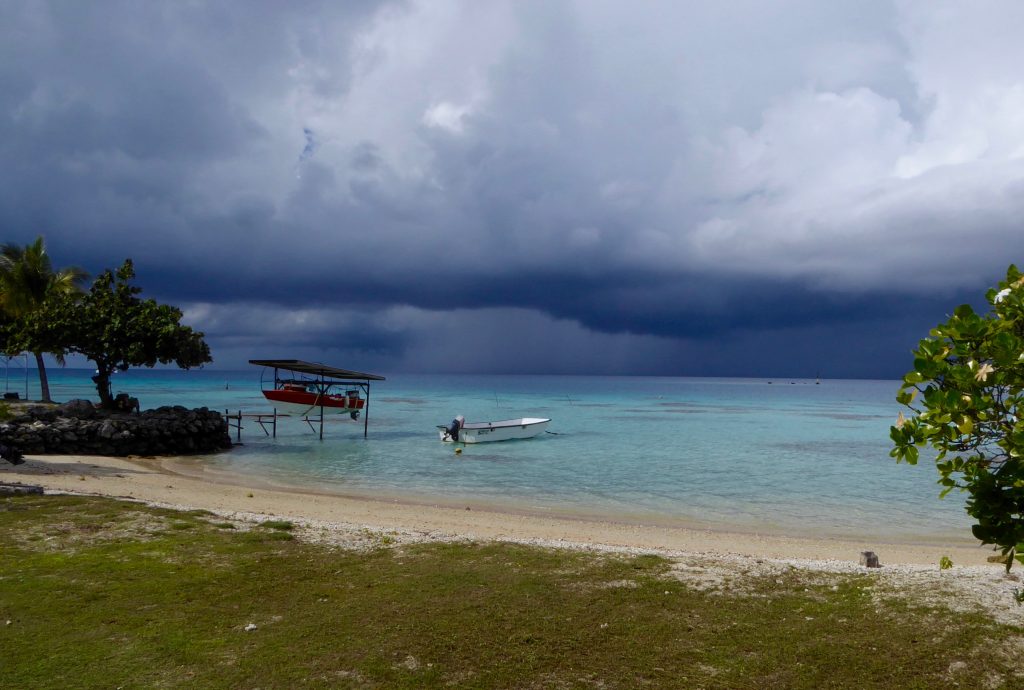
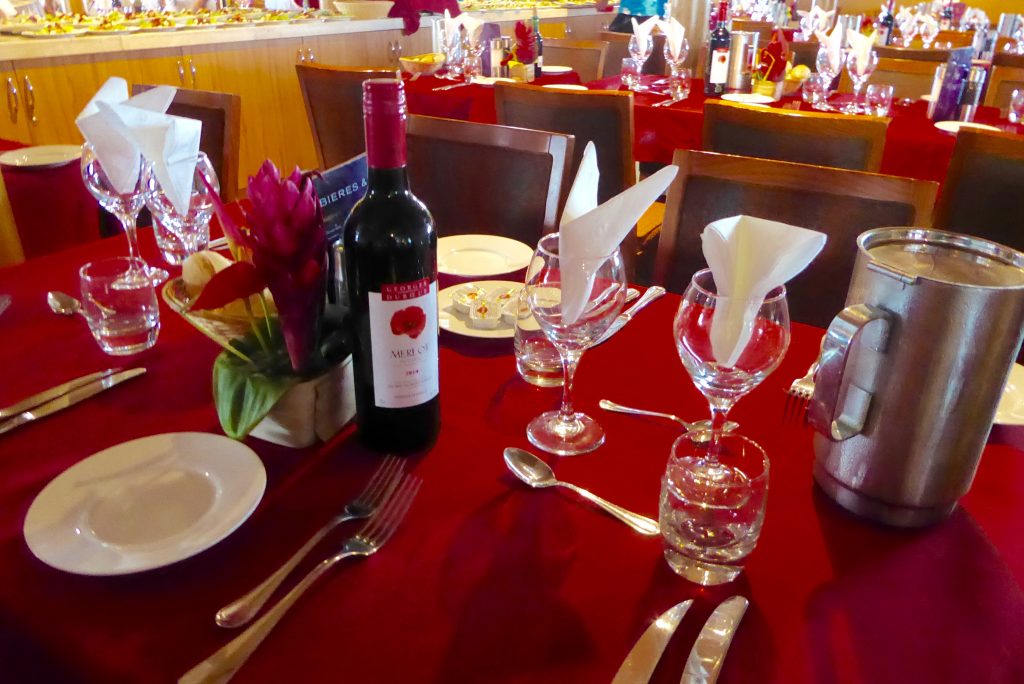
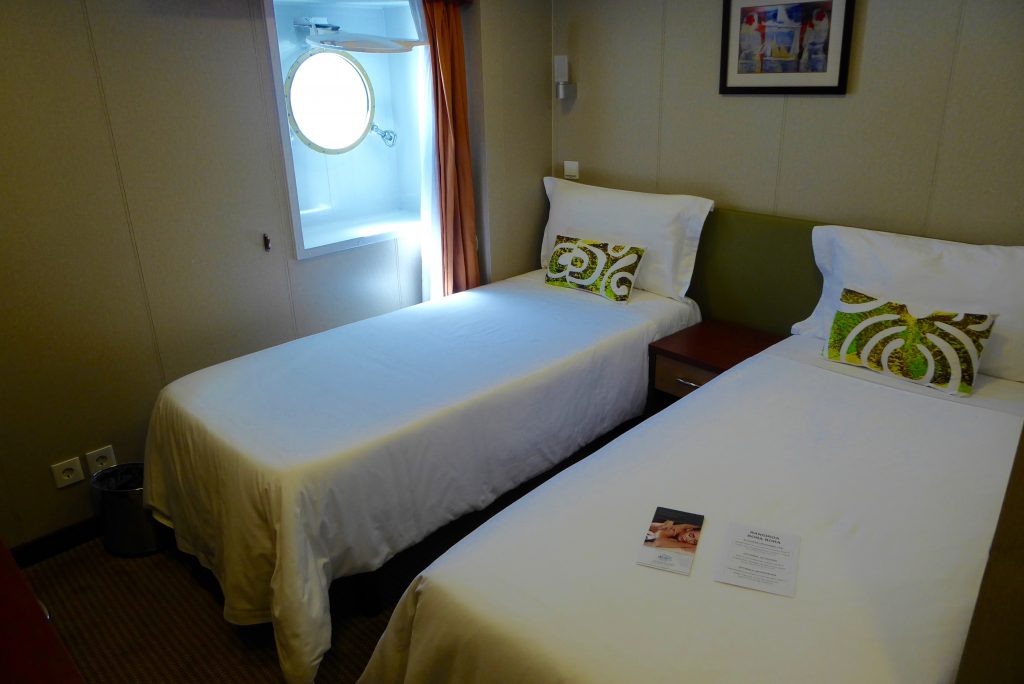
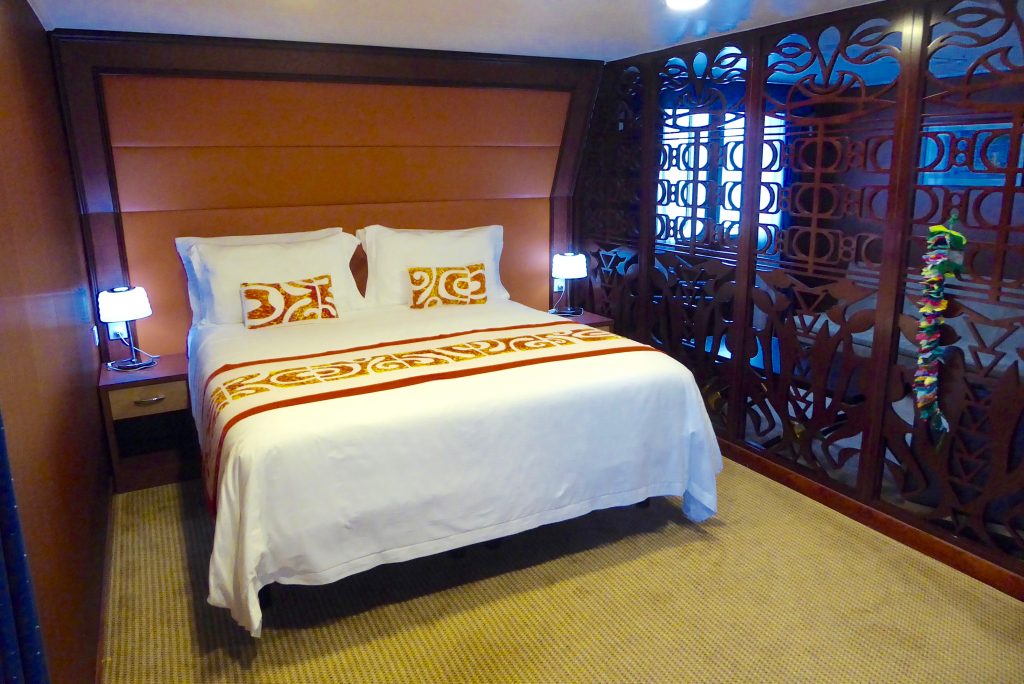
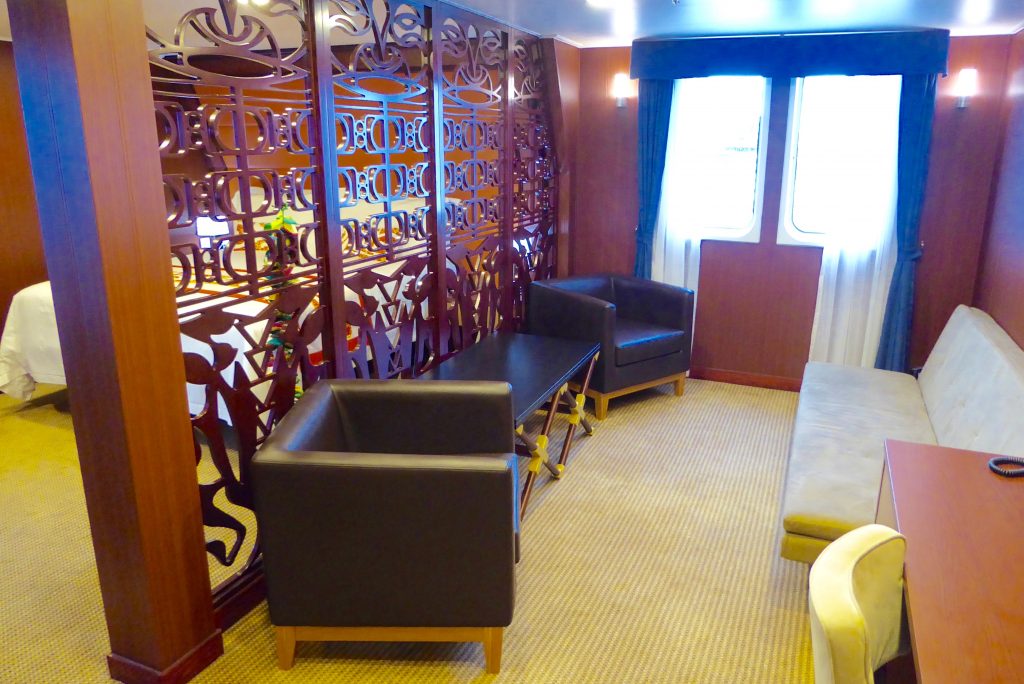
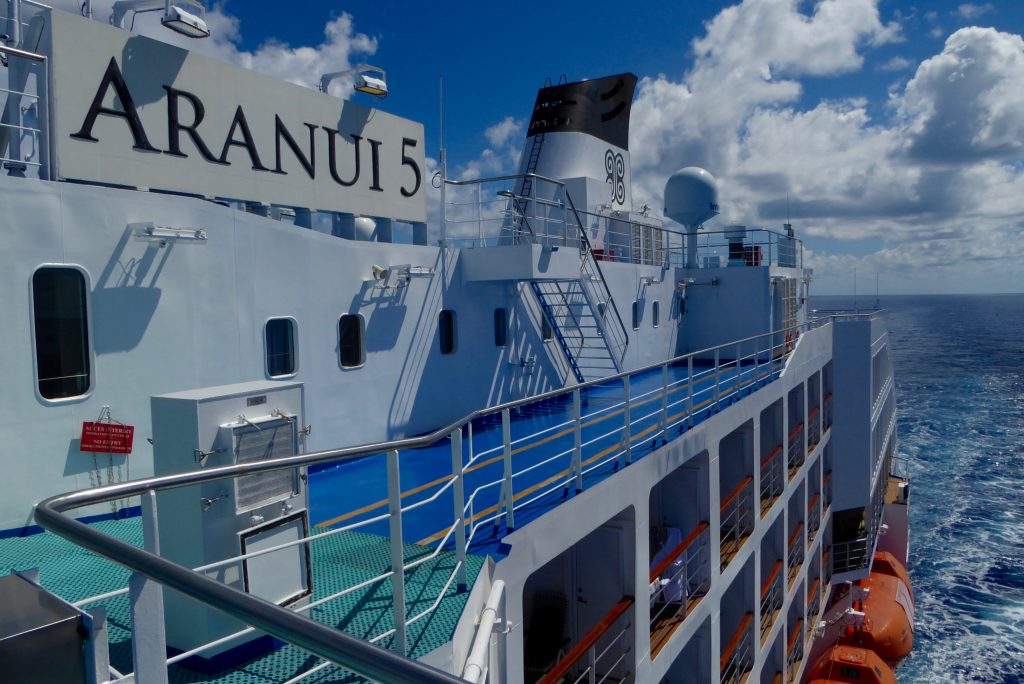
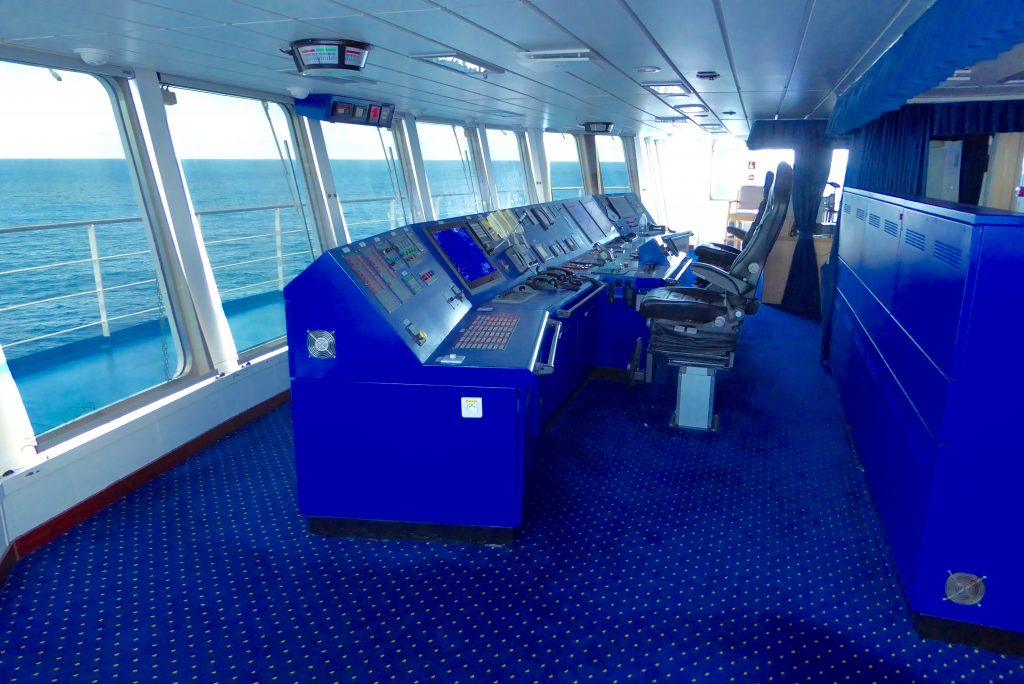
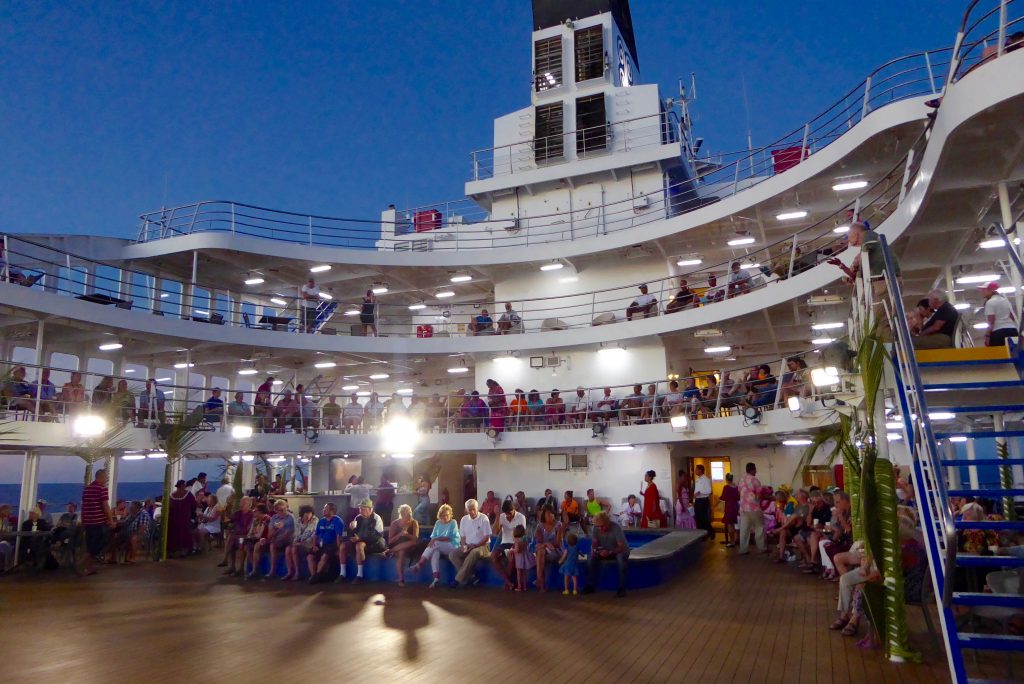
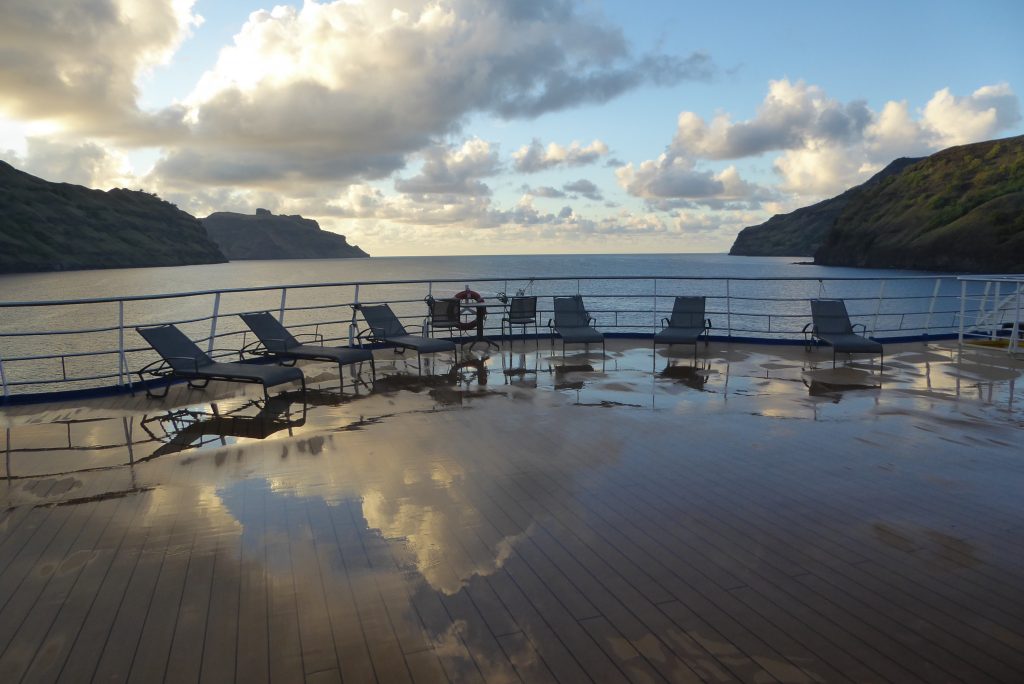
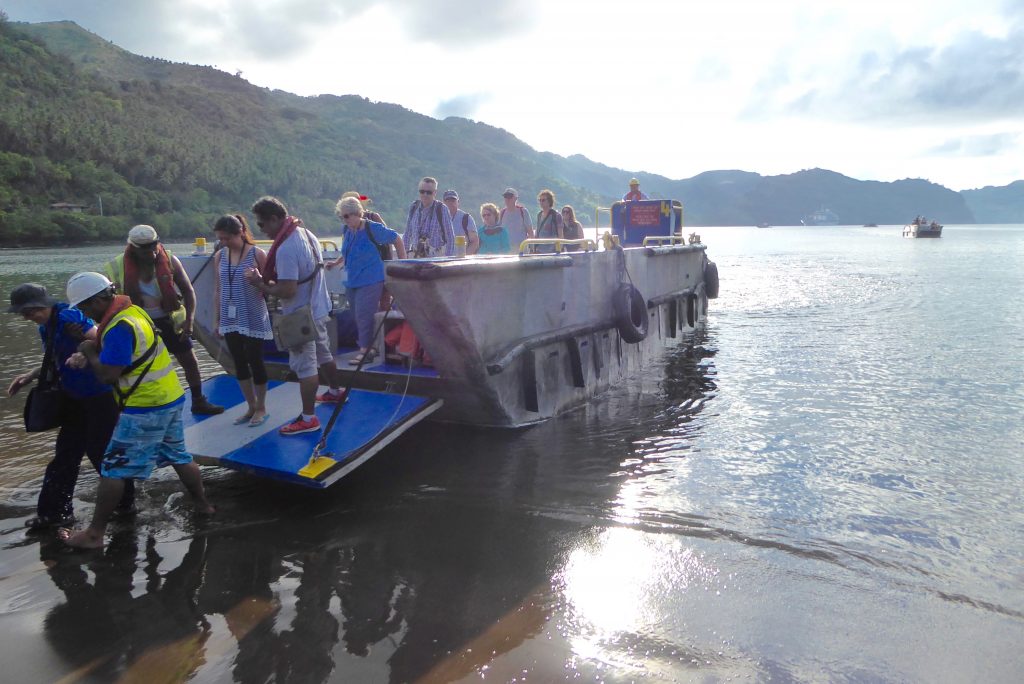
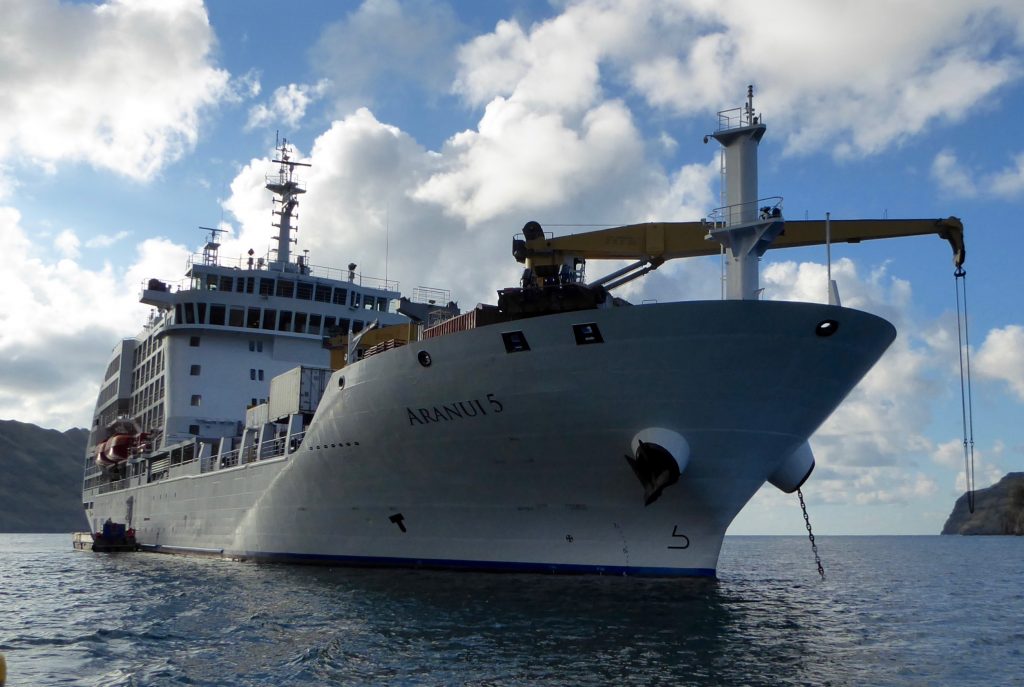
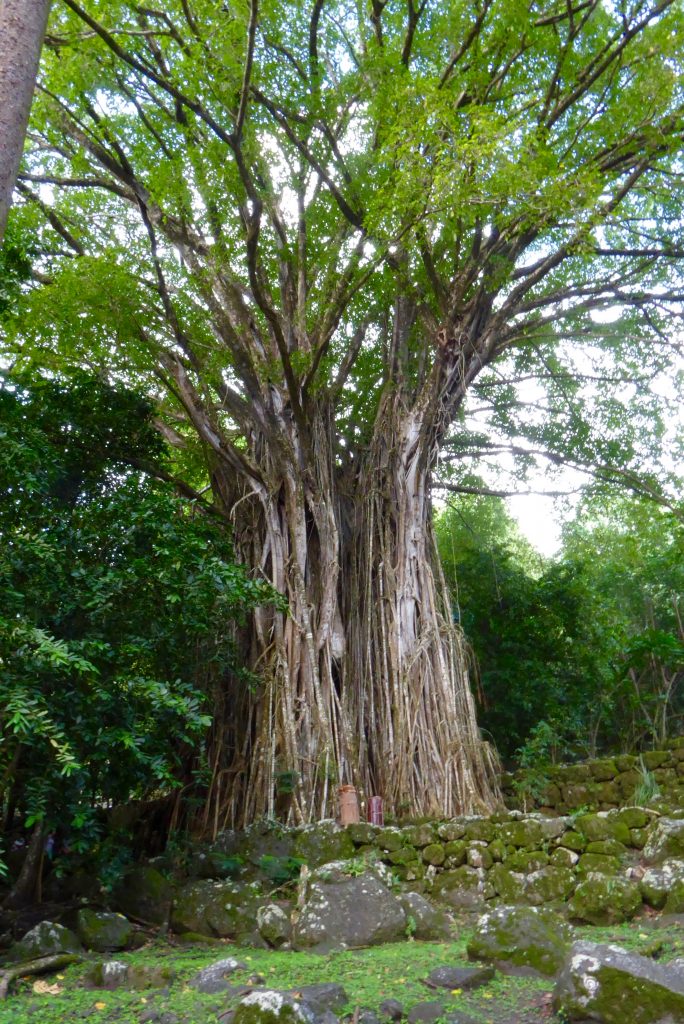
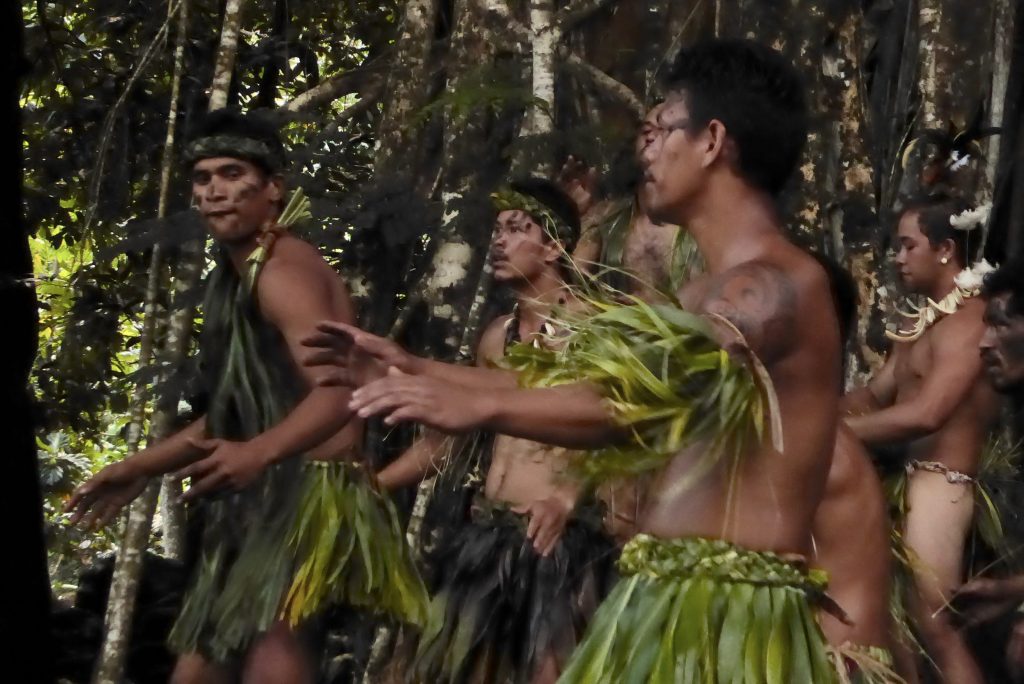
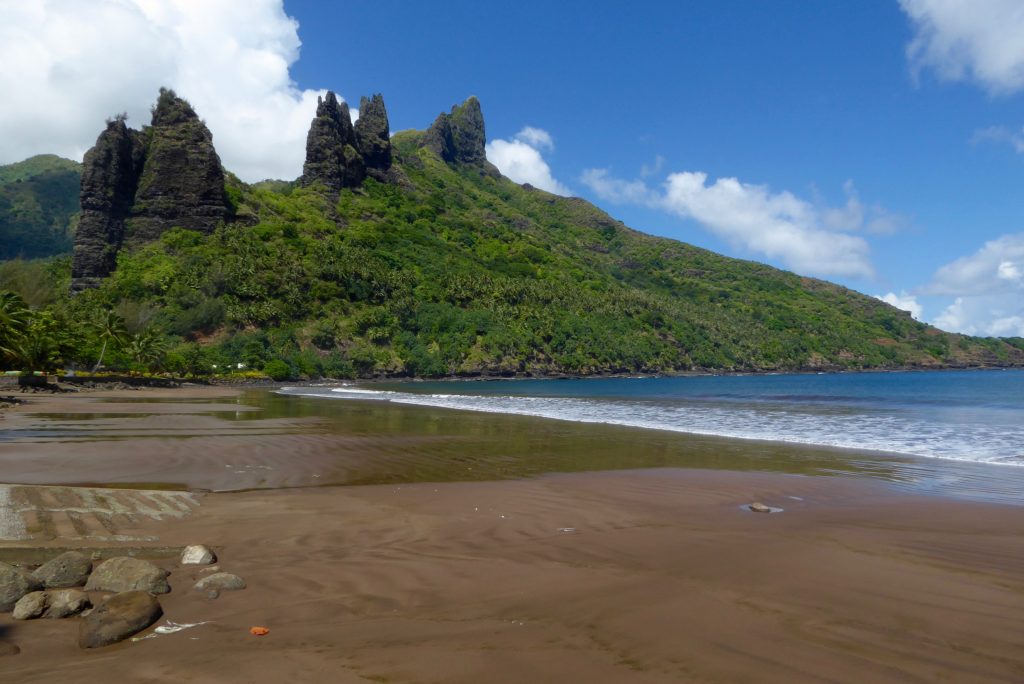
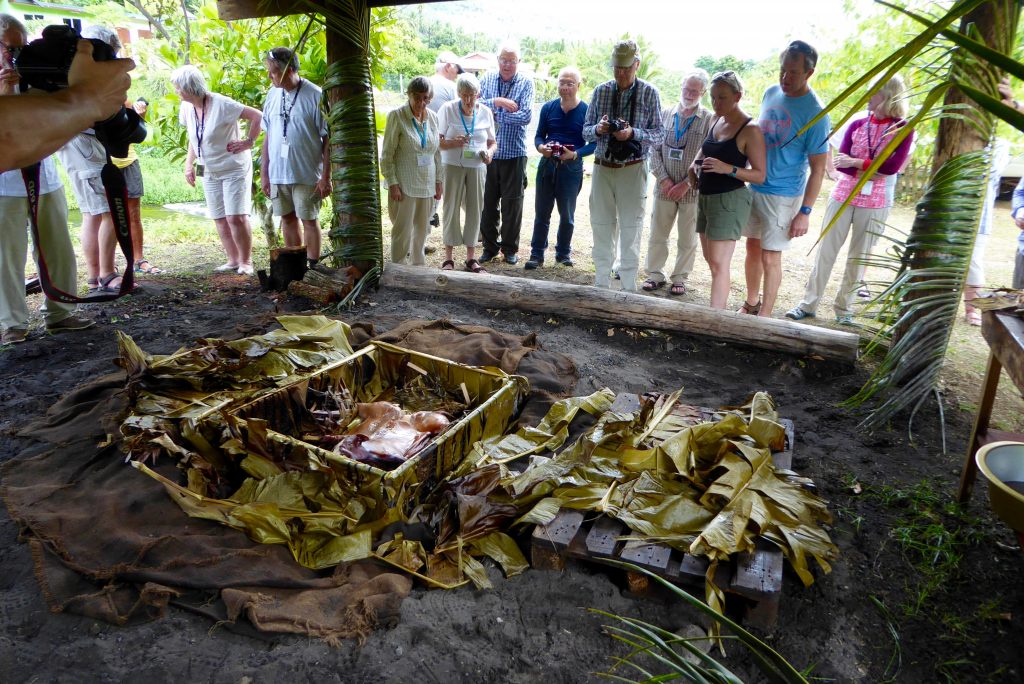
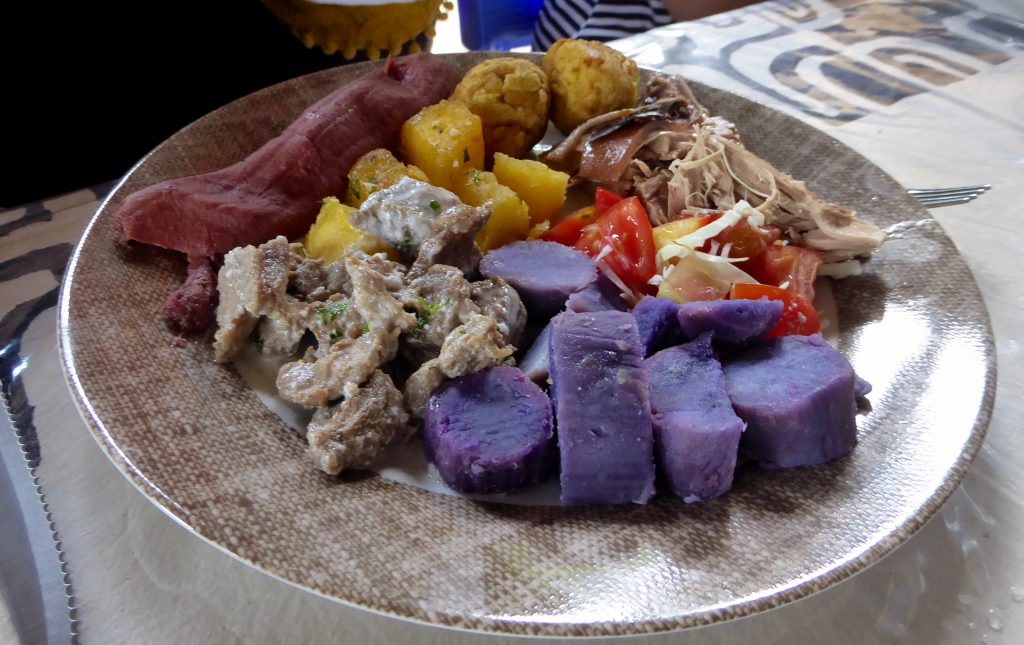
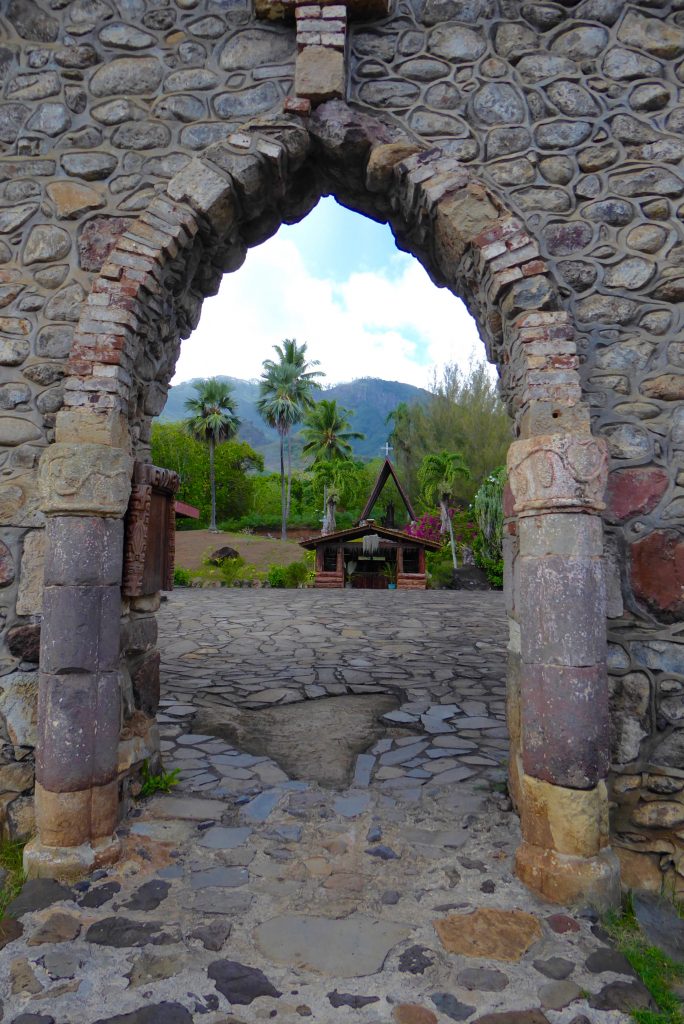
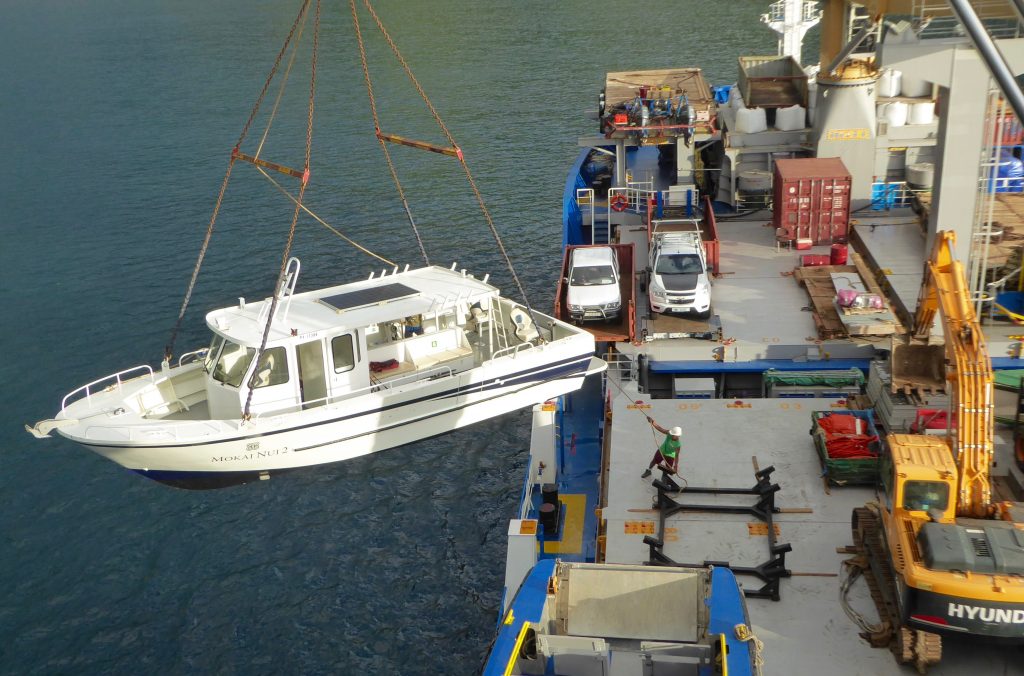
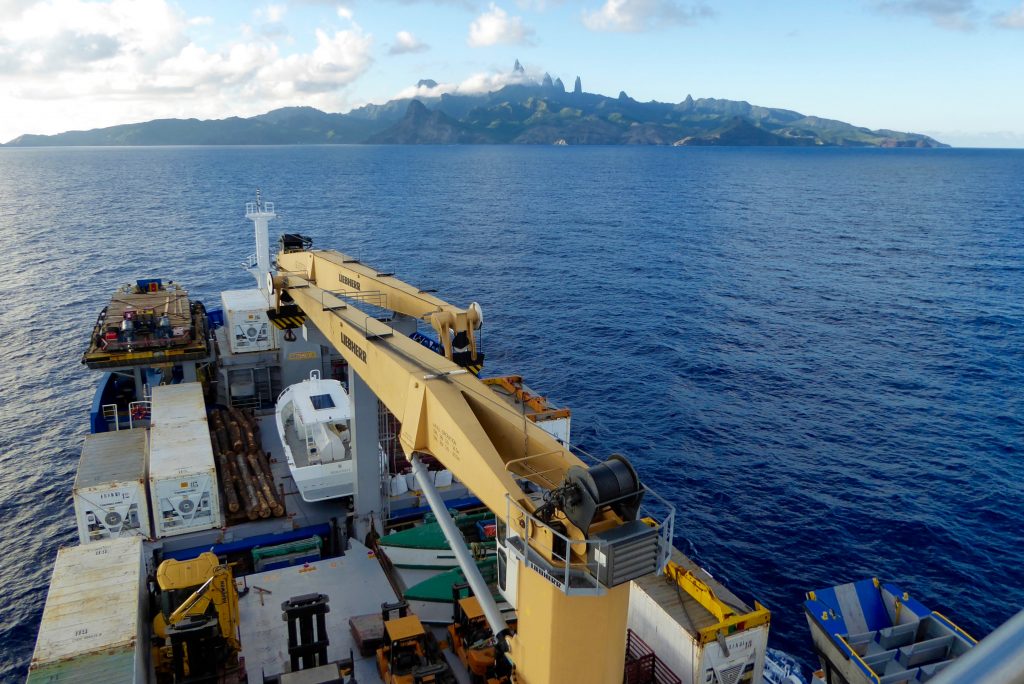
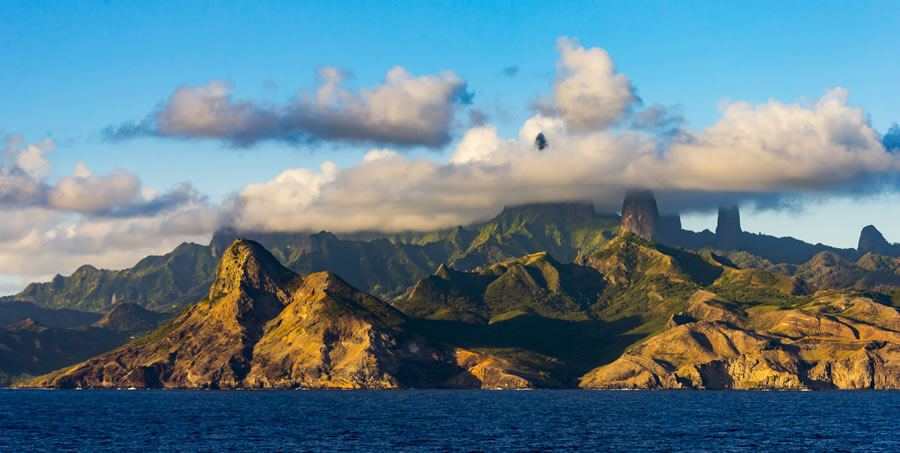
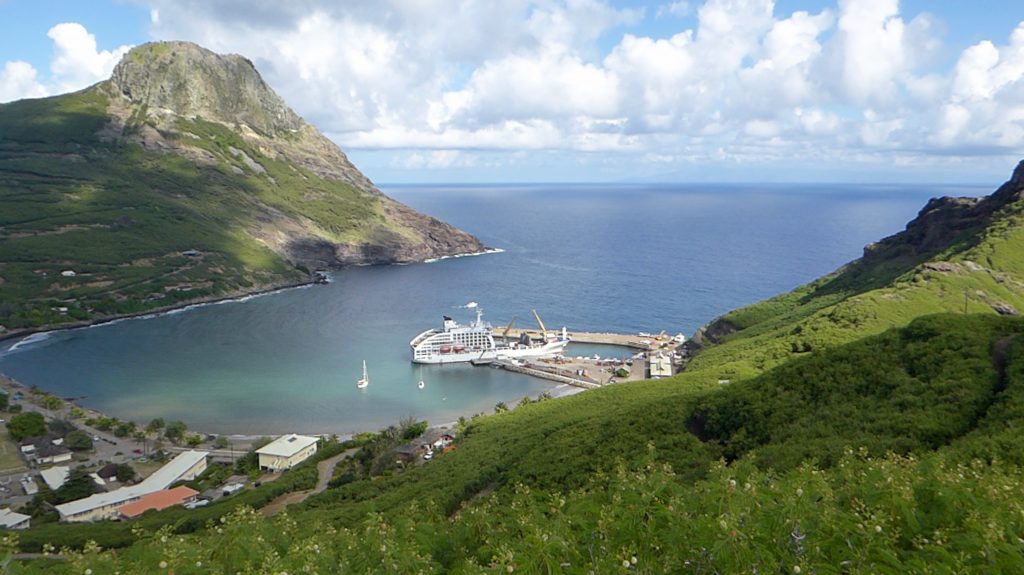
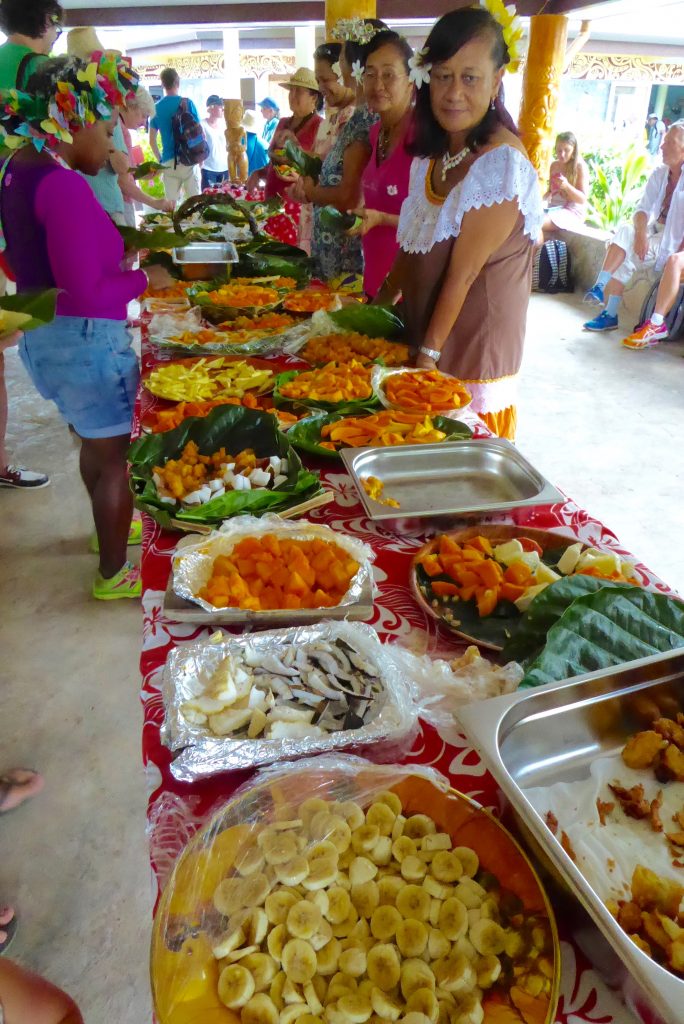
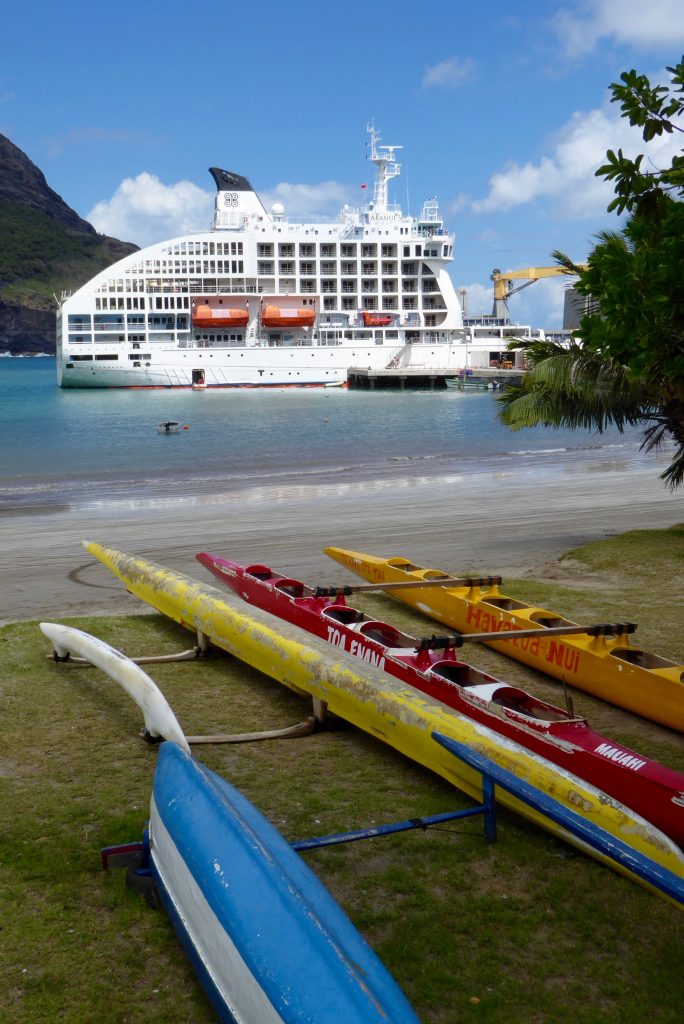
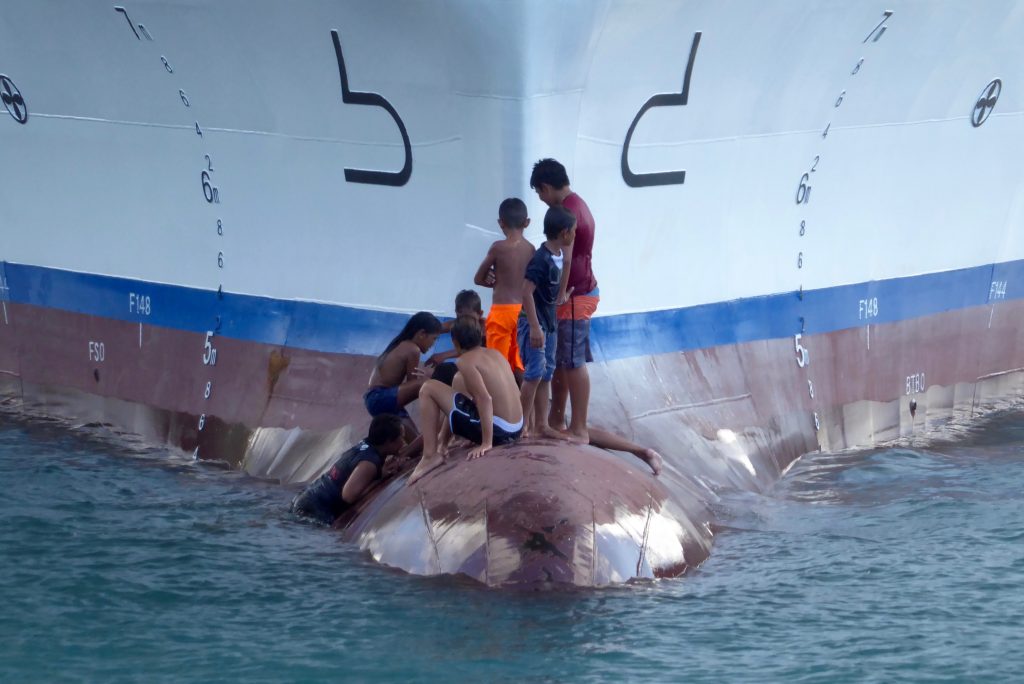
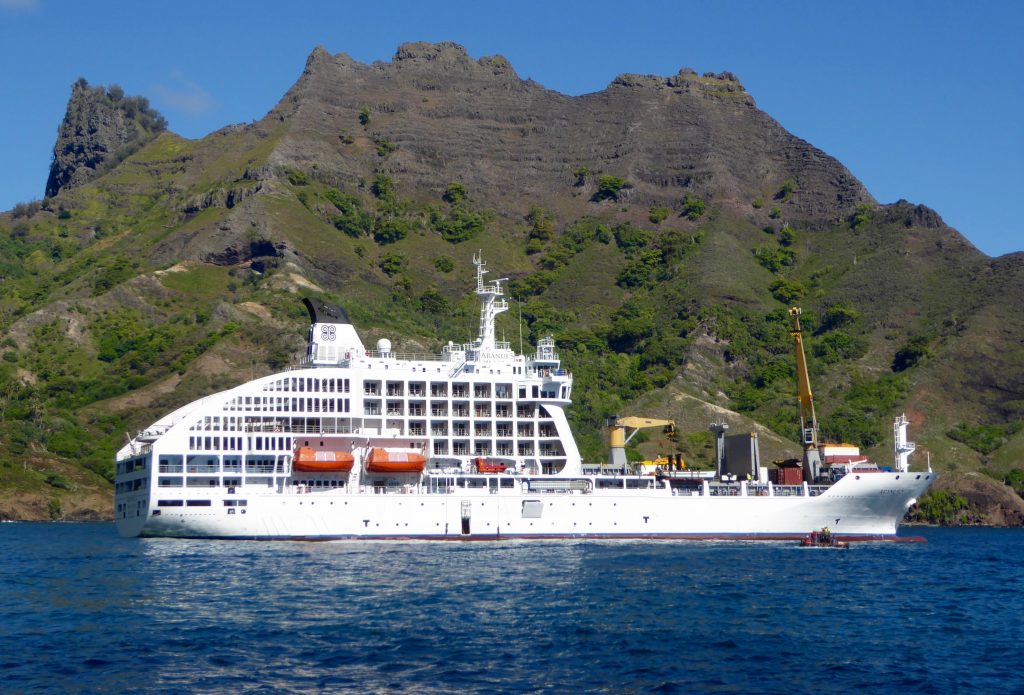
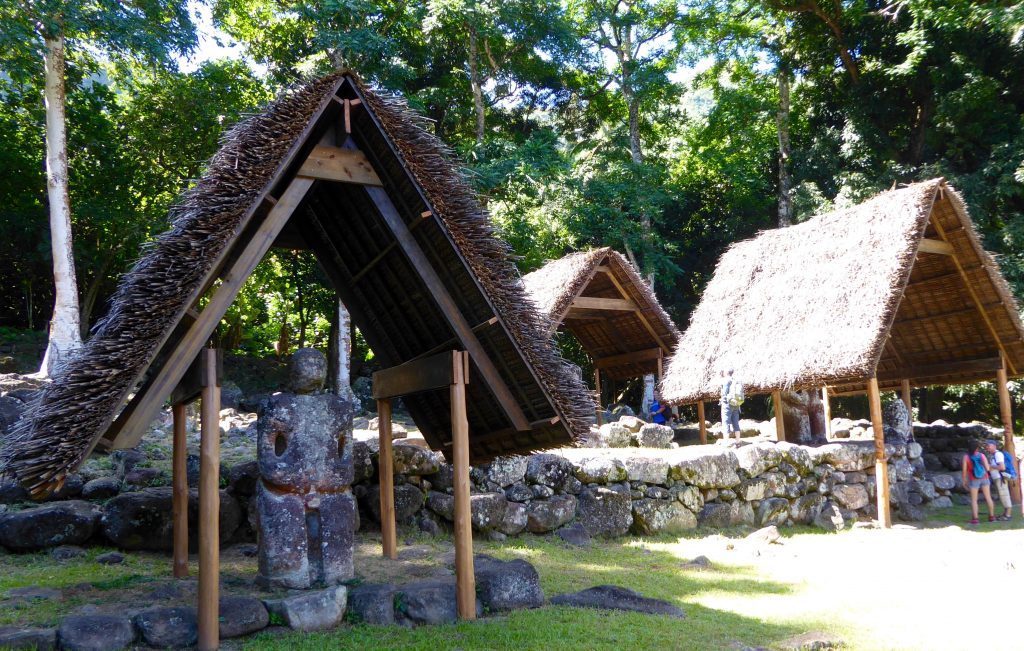
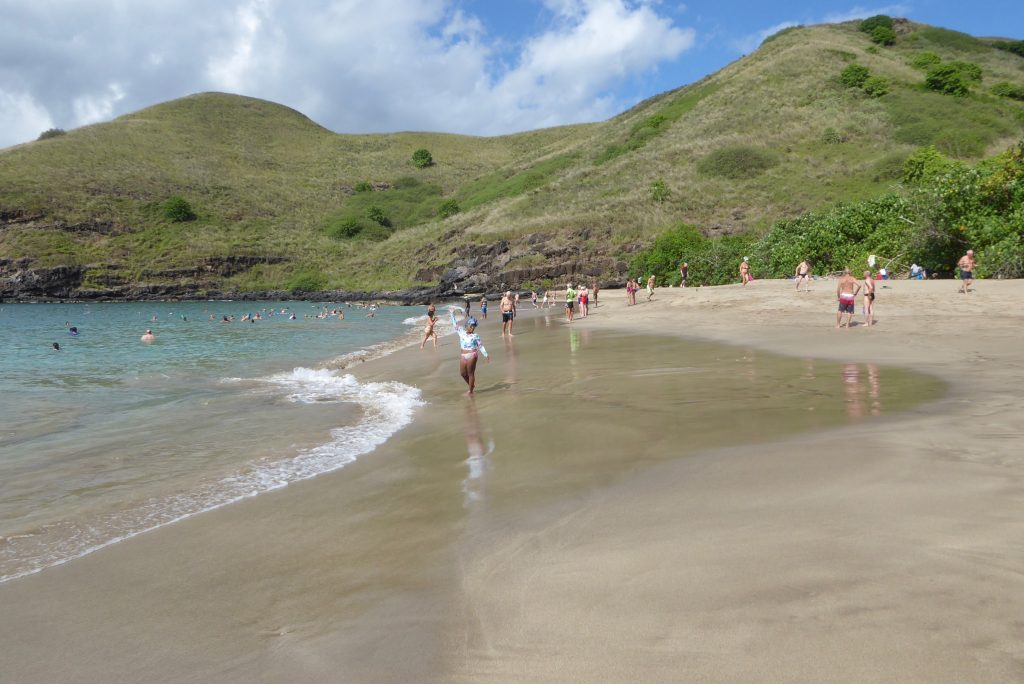
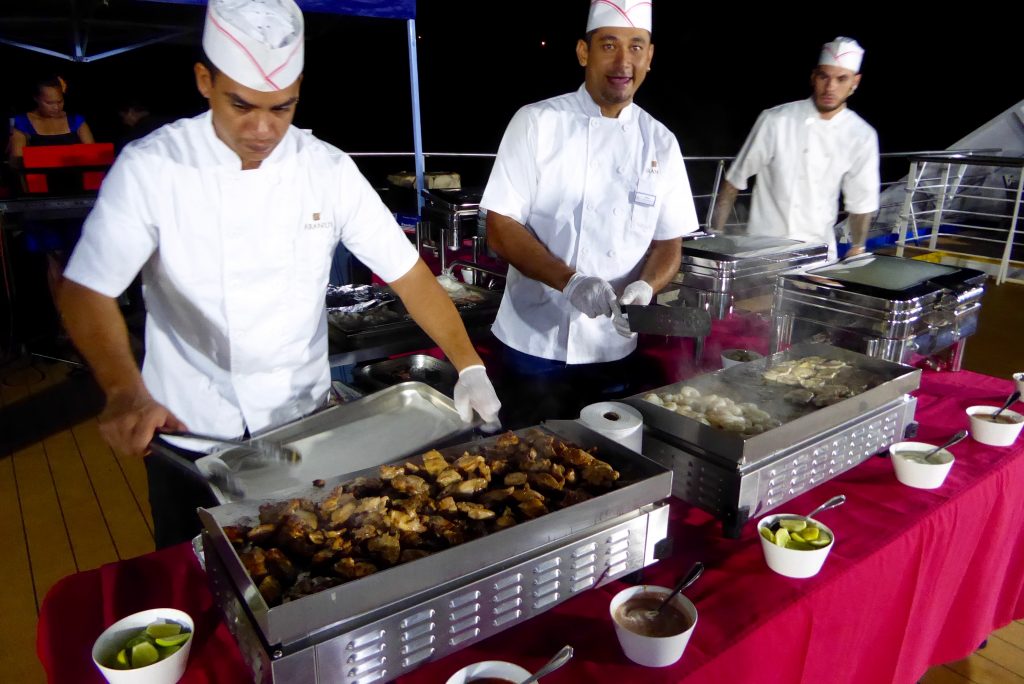
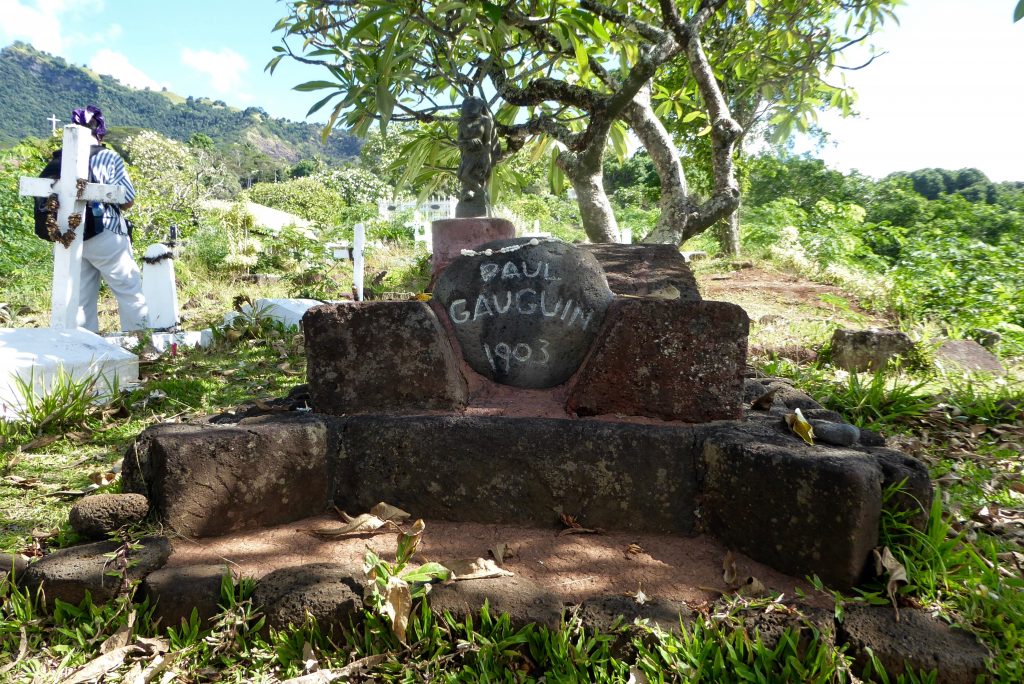
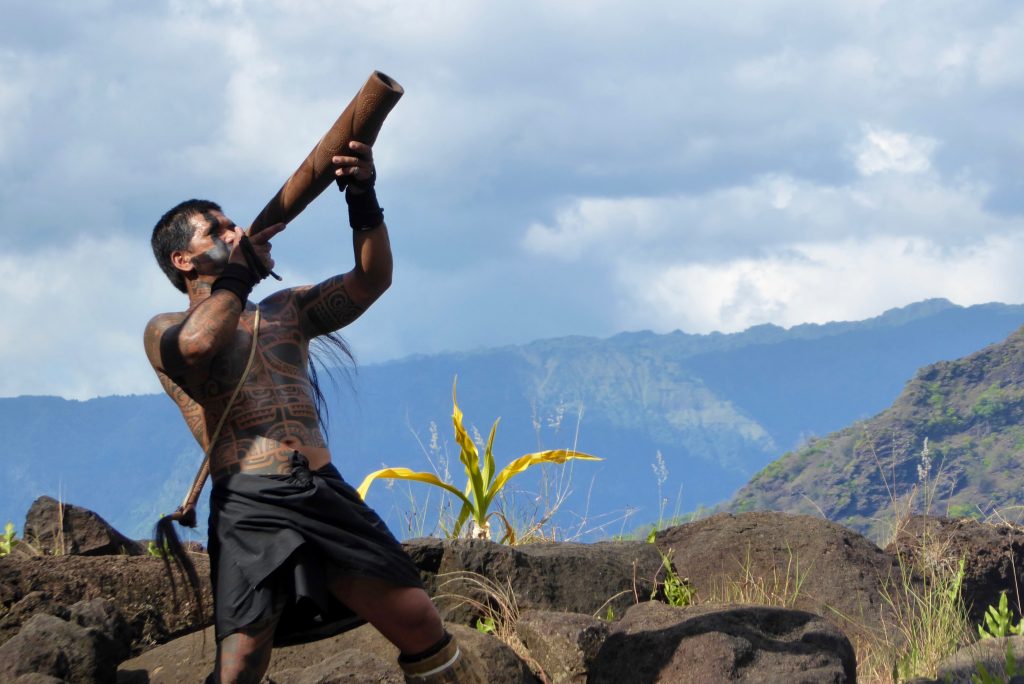
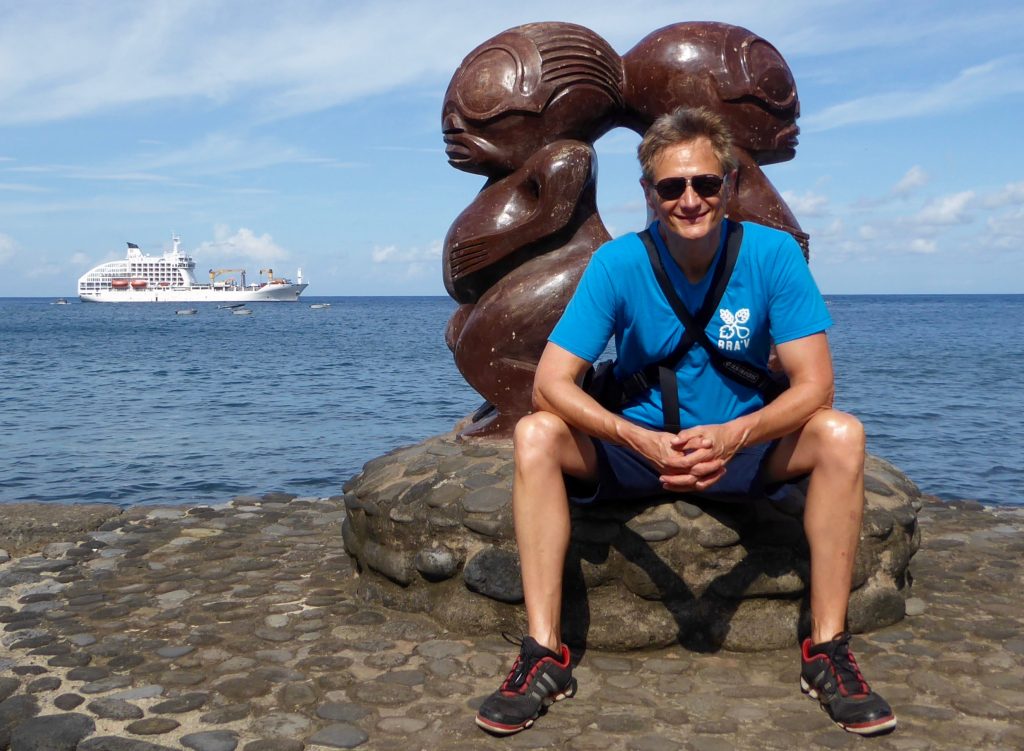
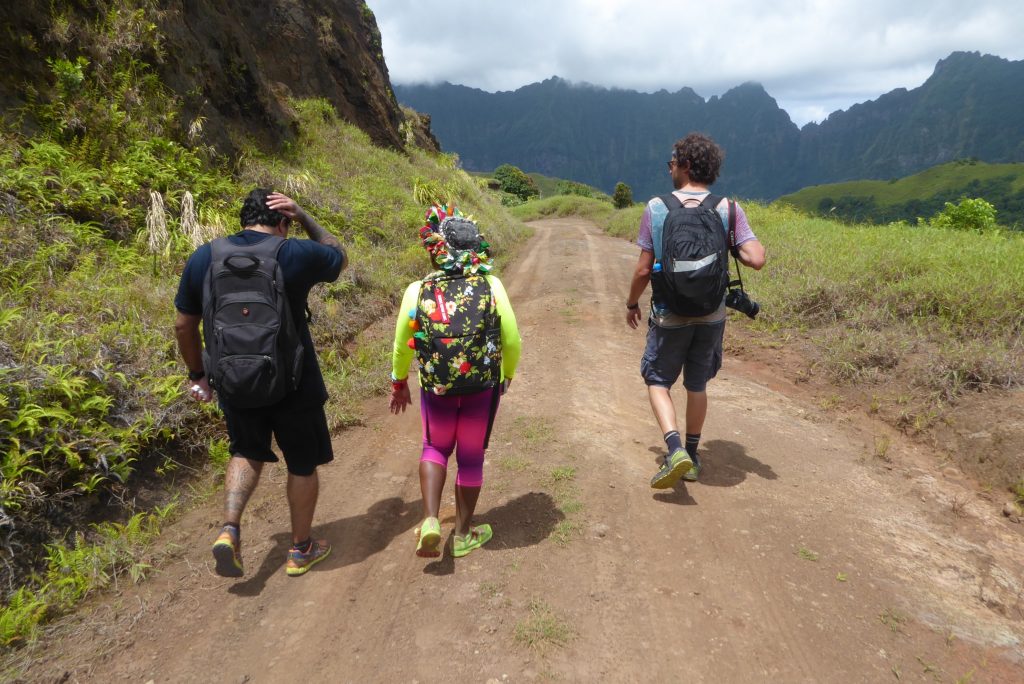
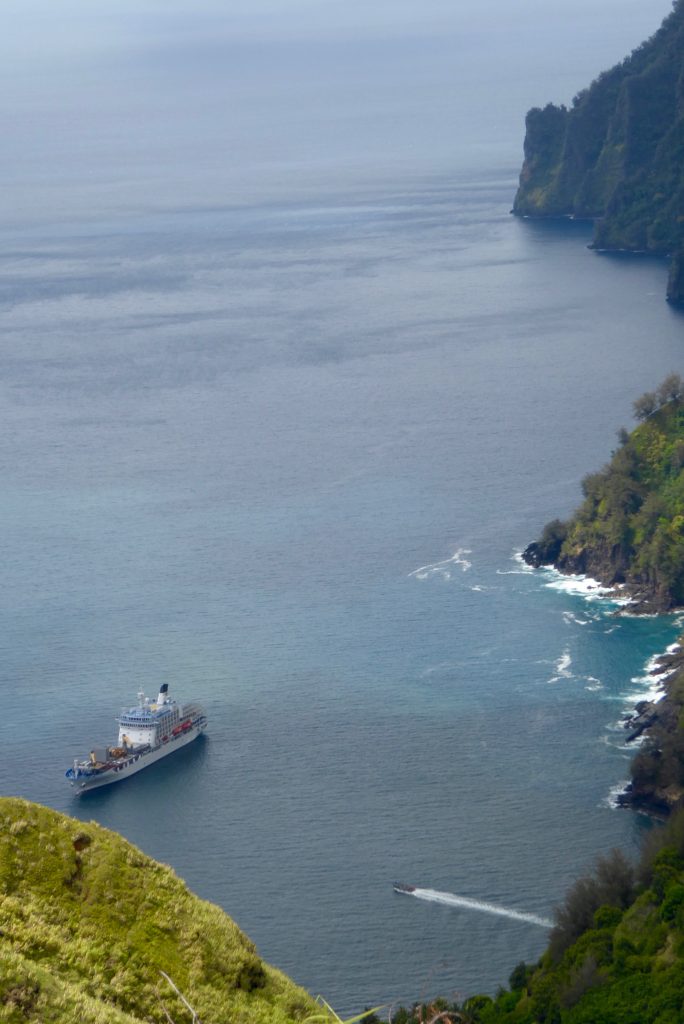
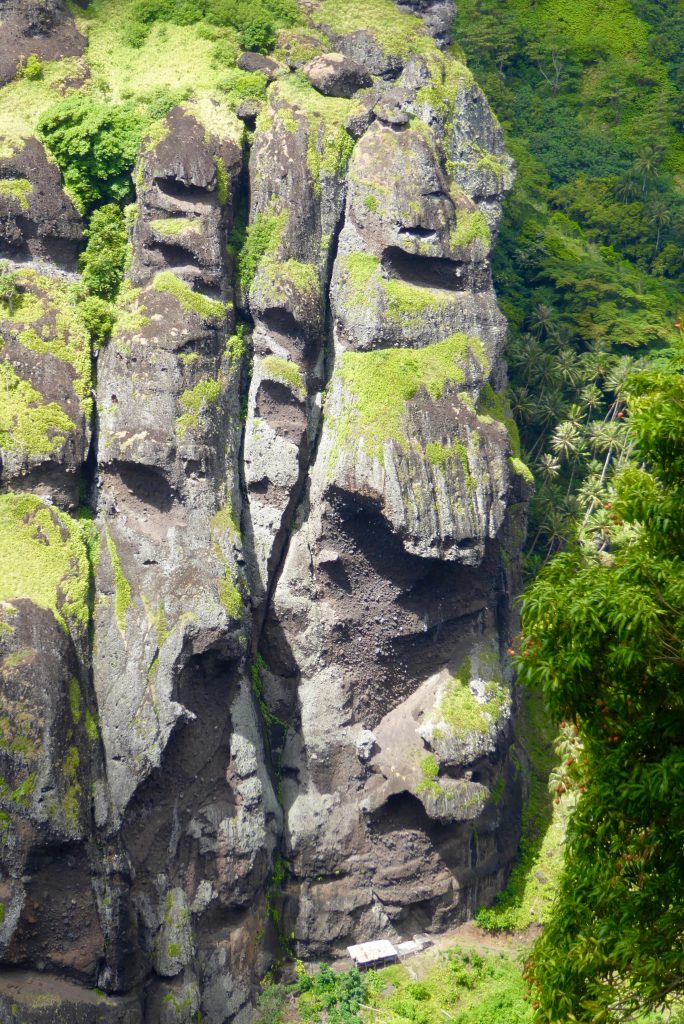
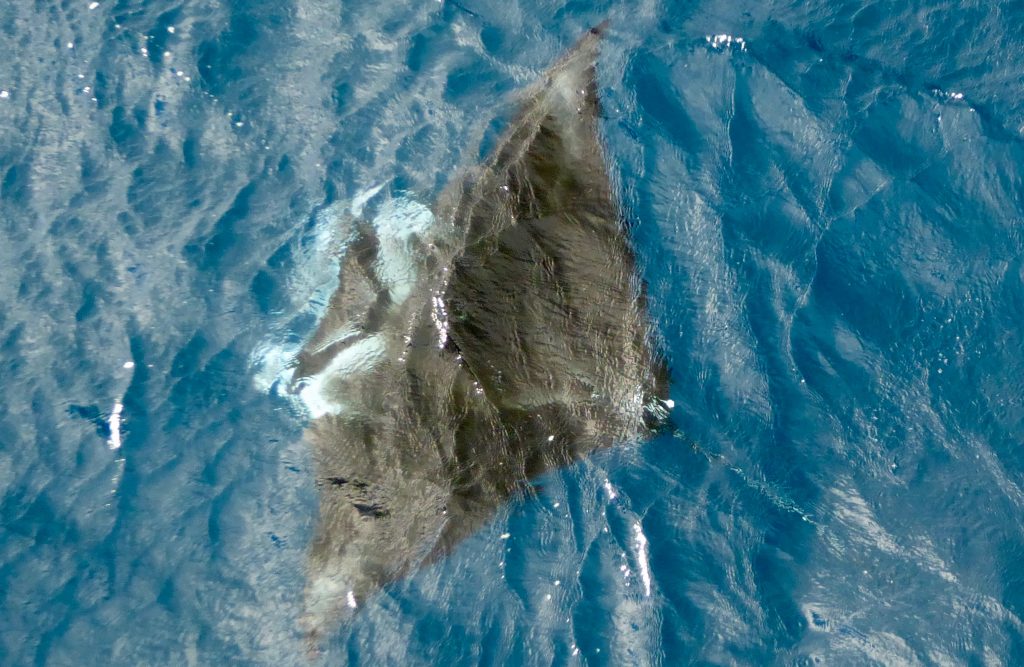
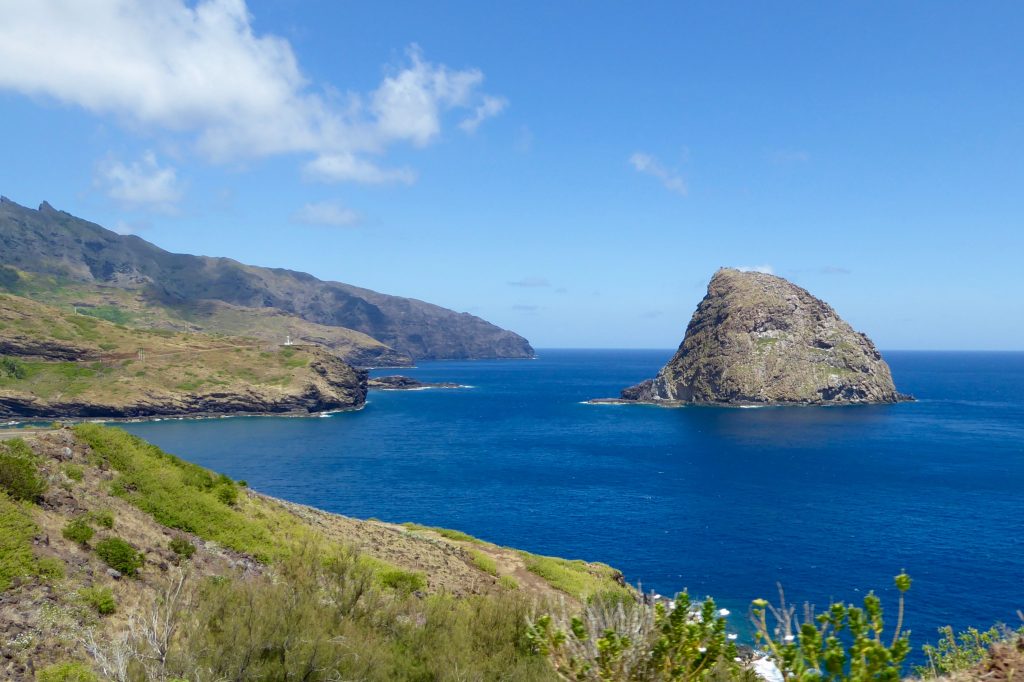
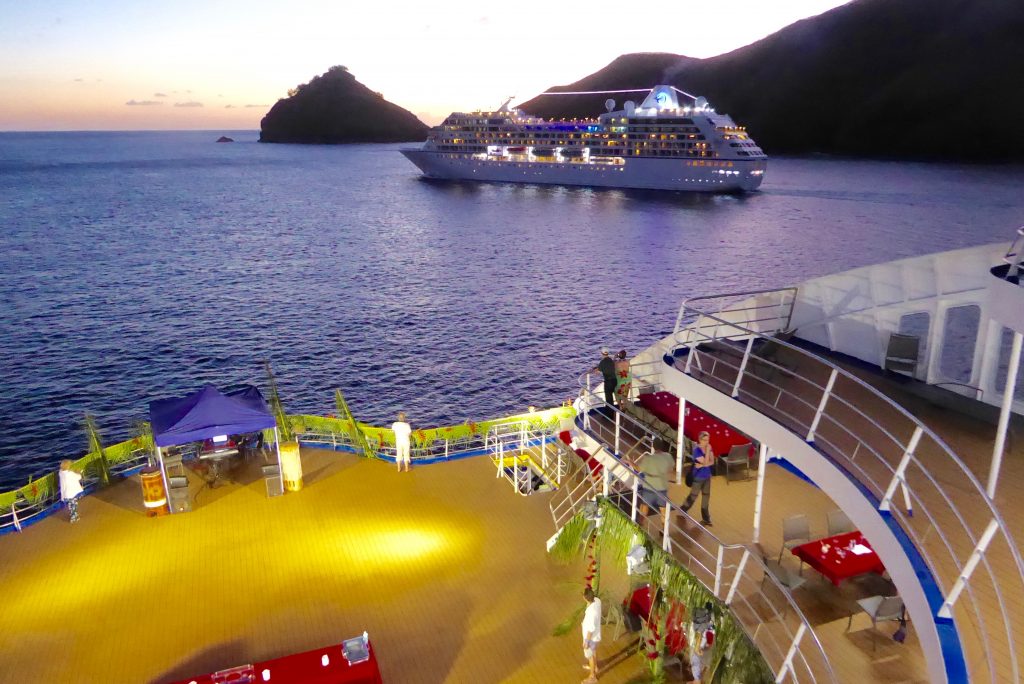
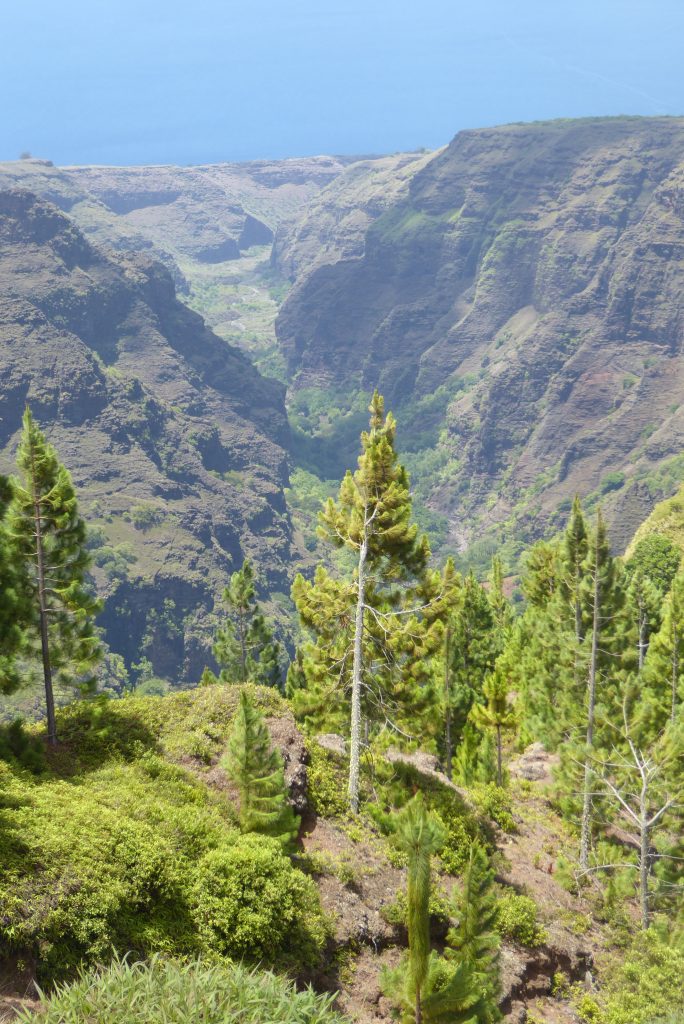
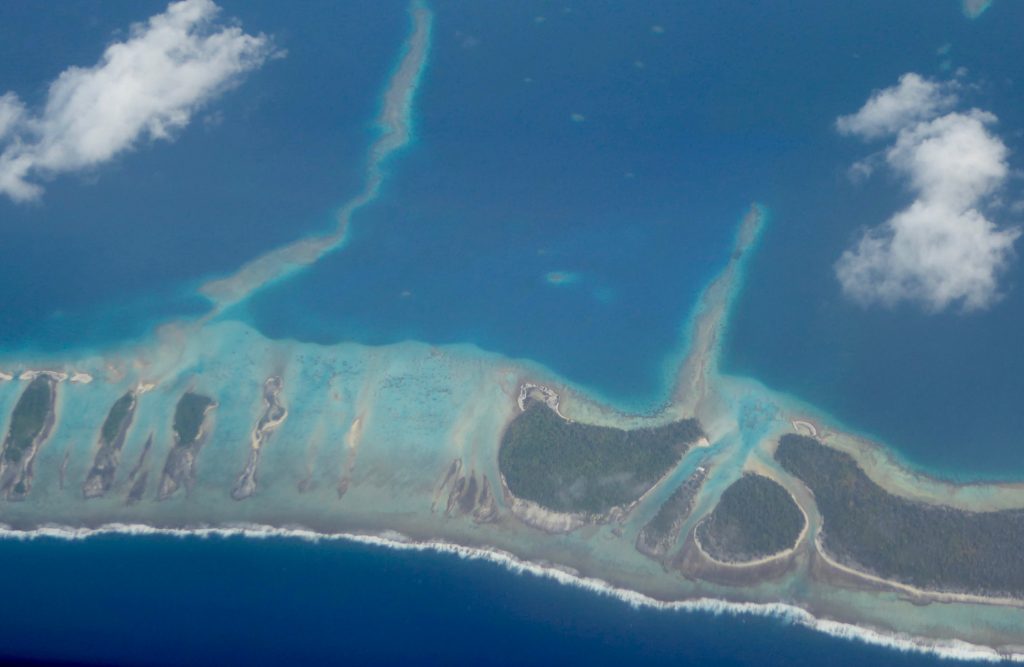
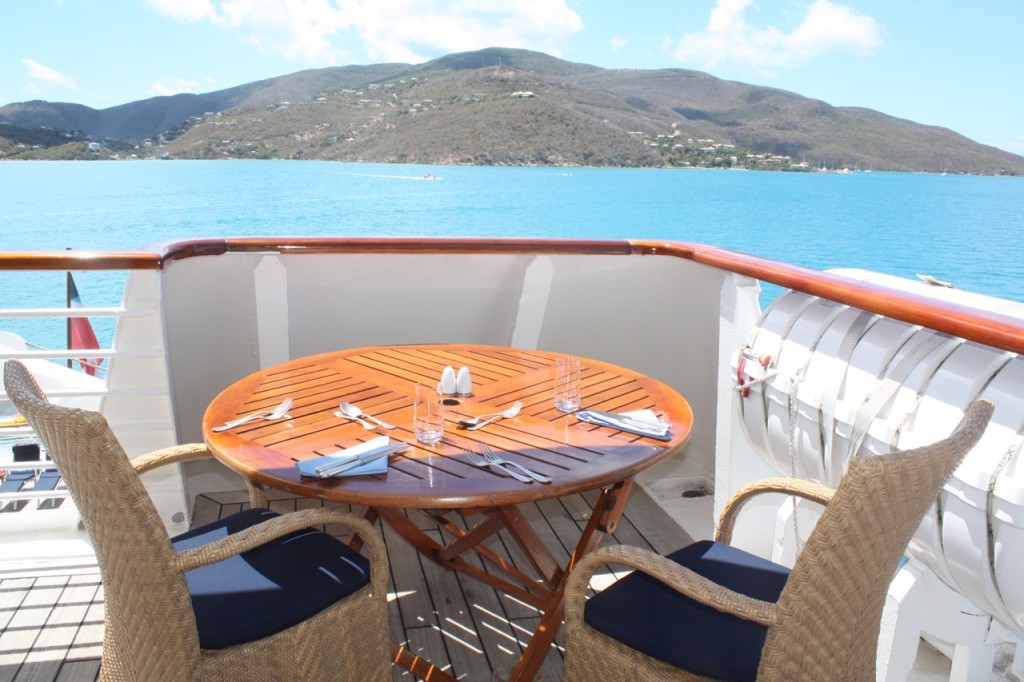
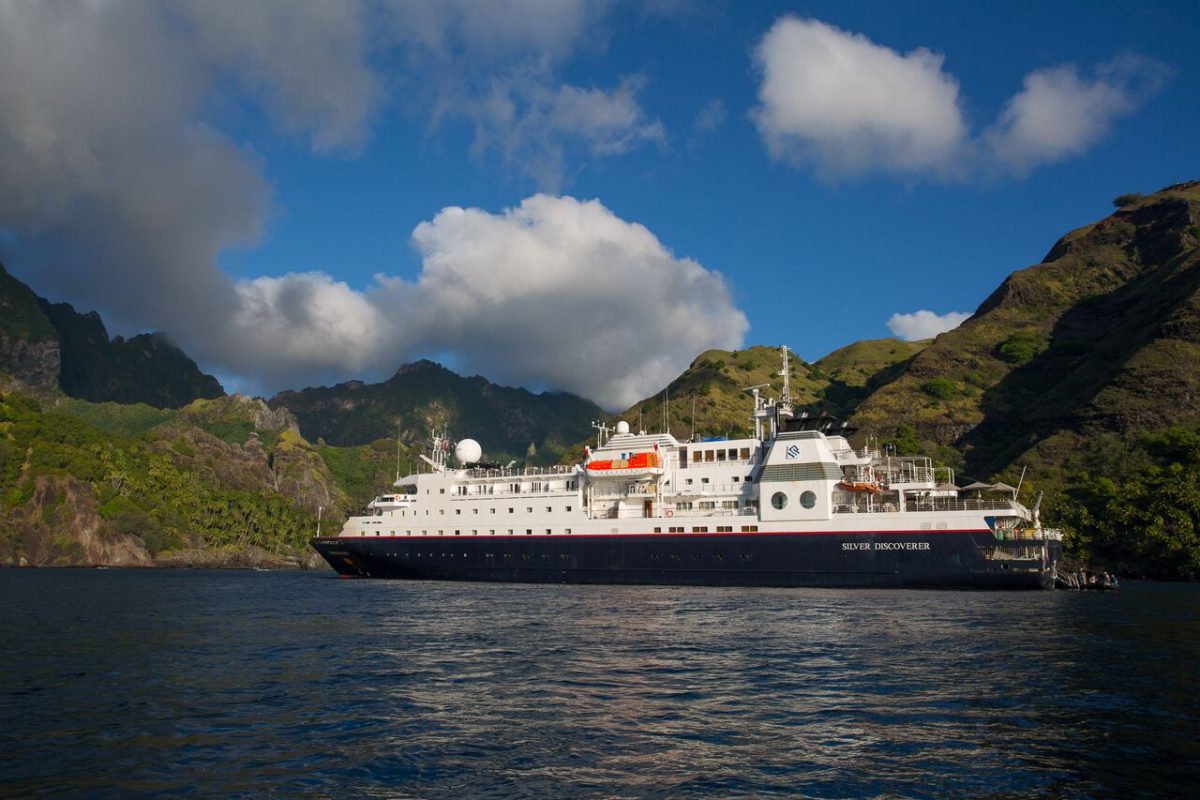
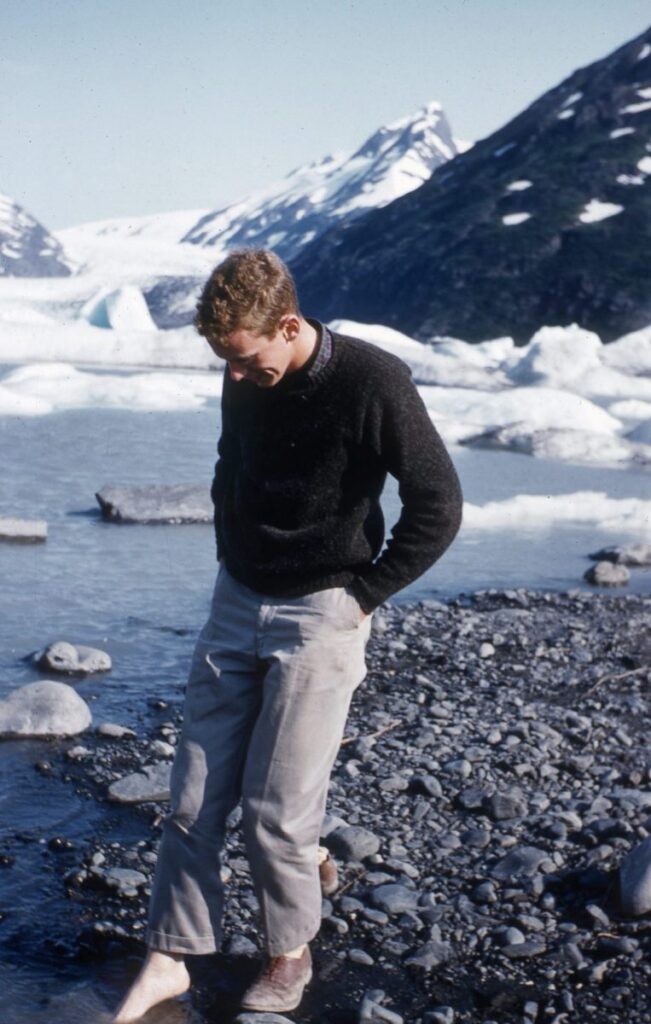









 HEIDI SARNA
HEIDI SARNA









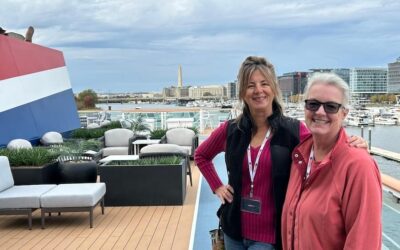
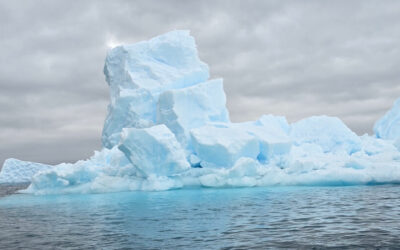

Another wonderful story and photos by Peter! Ah, the colors, nature and cultural richness! I would love to go.
Yes, this is definitely a bucket lister !!
Stunning photos in a super picturesque setting.